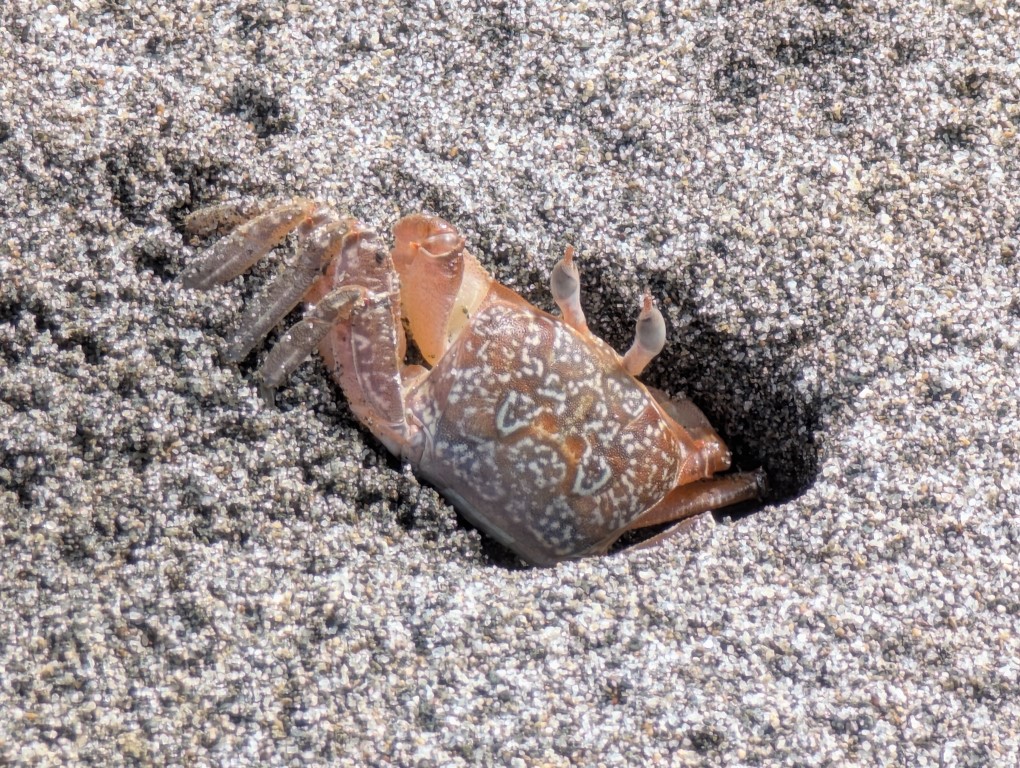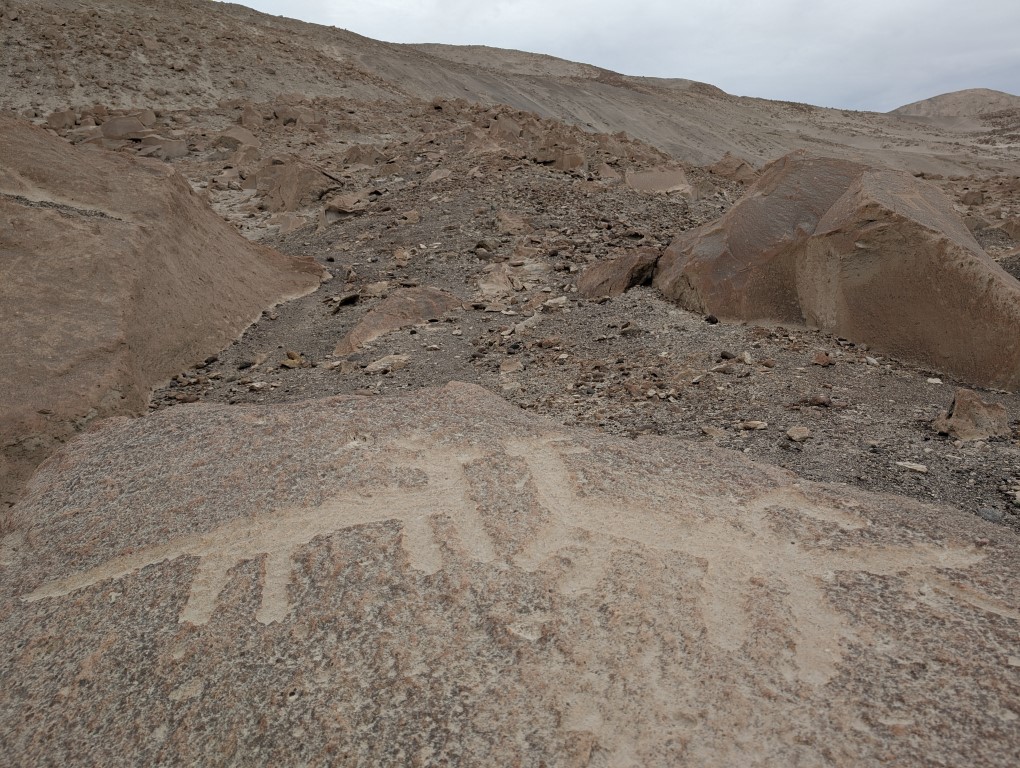
We’re not in Patagonia anymore. But then again, we are seeing some nice things. Being back in Peru from a Christmas holiday, the mountains are now in the rainy season so they are off limits to backpacking for us because we don’t enjoy clouds & rain. We thought better of driving hundreds of miles north to visit the Cordillera Blanca in that rain even for dayhikes because it didn’t seem like a lot of fun. So we pointed the bow south, wavering at times but in the end, we still stuck to a 180 course. And now we’re out of the rain and in the bright sun.
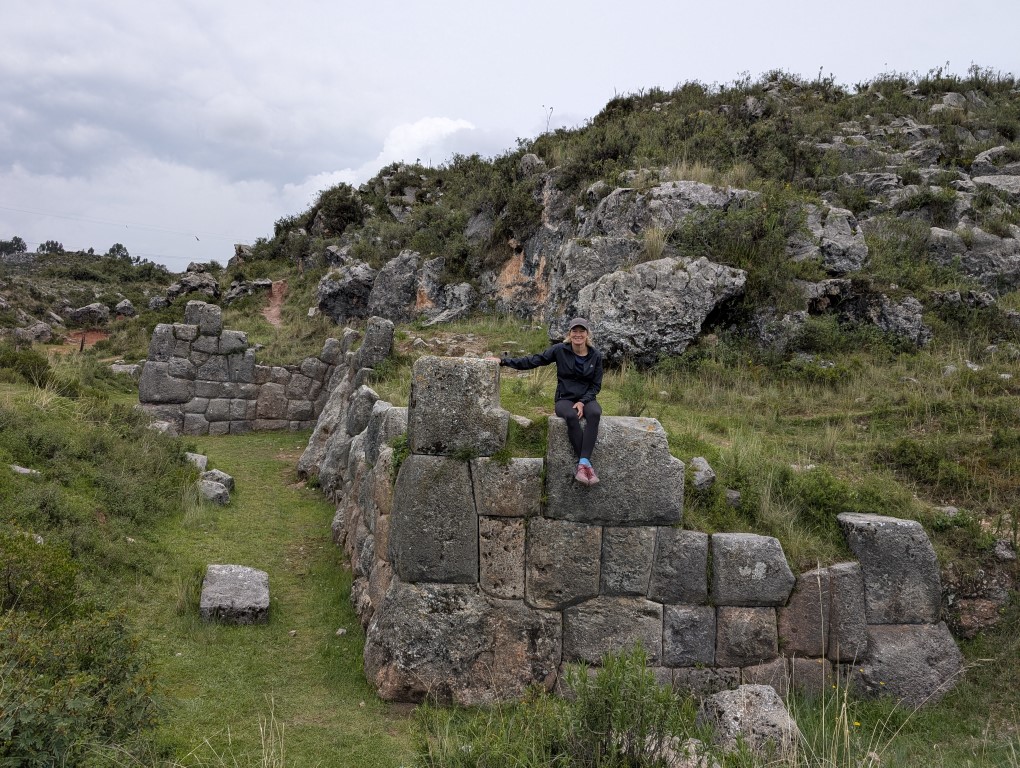
The day before we left Cuzco we took one last hike to some Incan ruins before heading off toward the area of Ausangate Mountain. If we can’t make it in a day, we often stop in a town square for the night. It’s nice to walk the cobblestone streets in the evening when everyone is out & about. Because it’s unusual to really hang out with the locals, it’s nice to have this interaction.
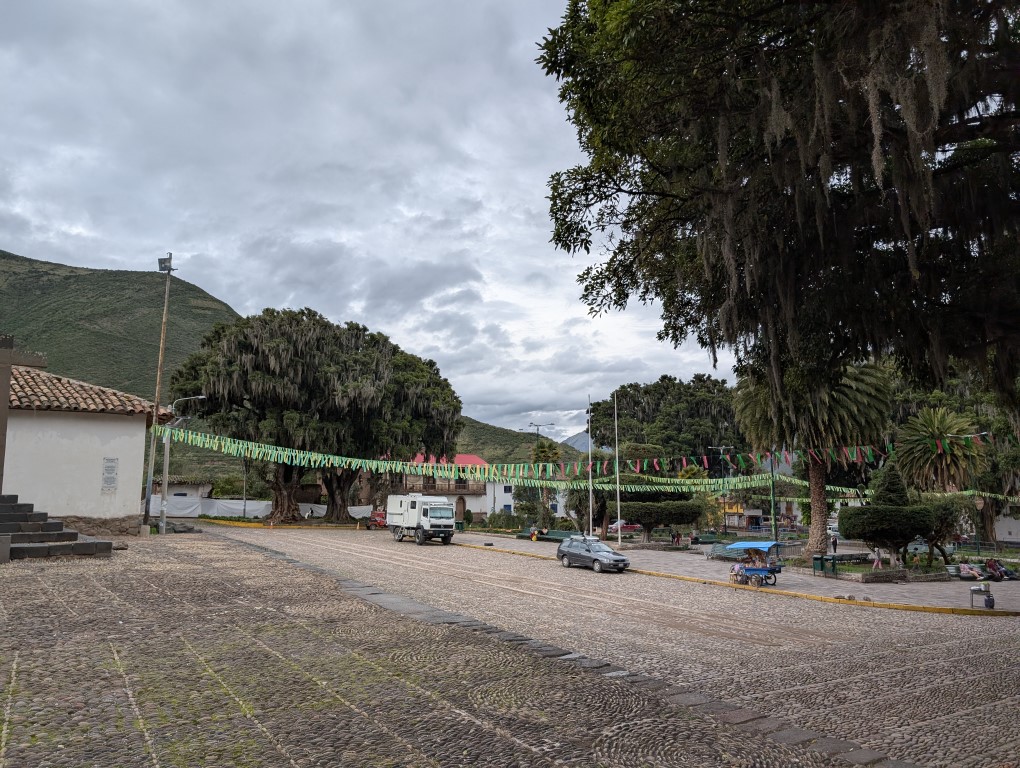
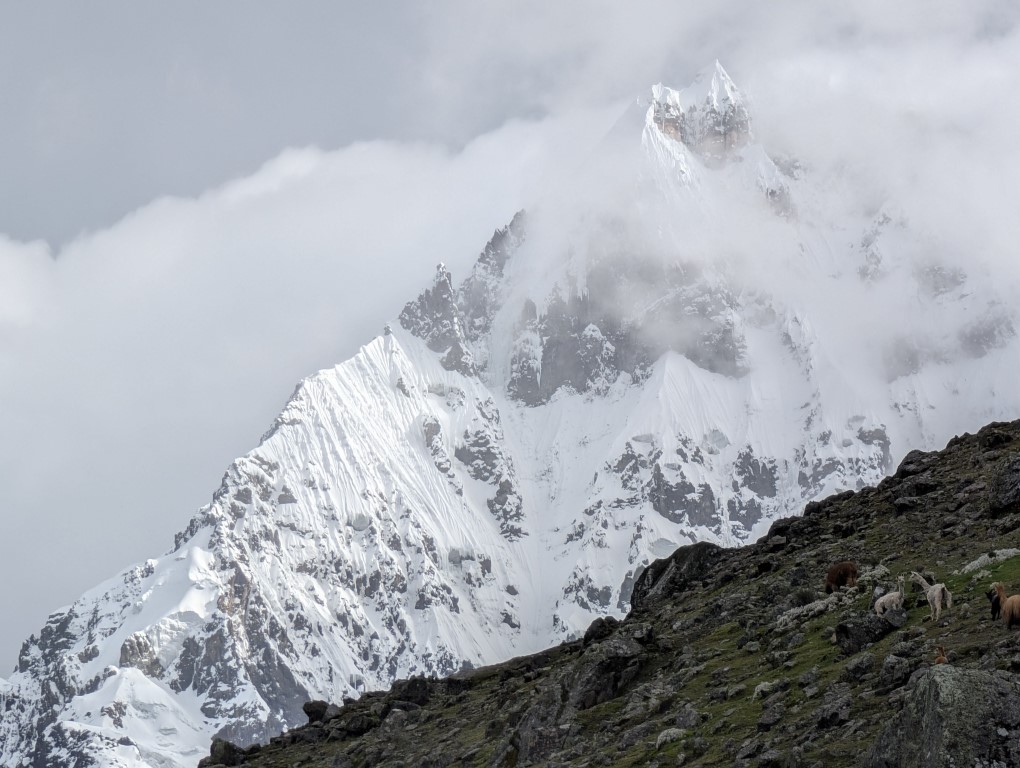
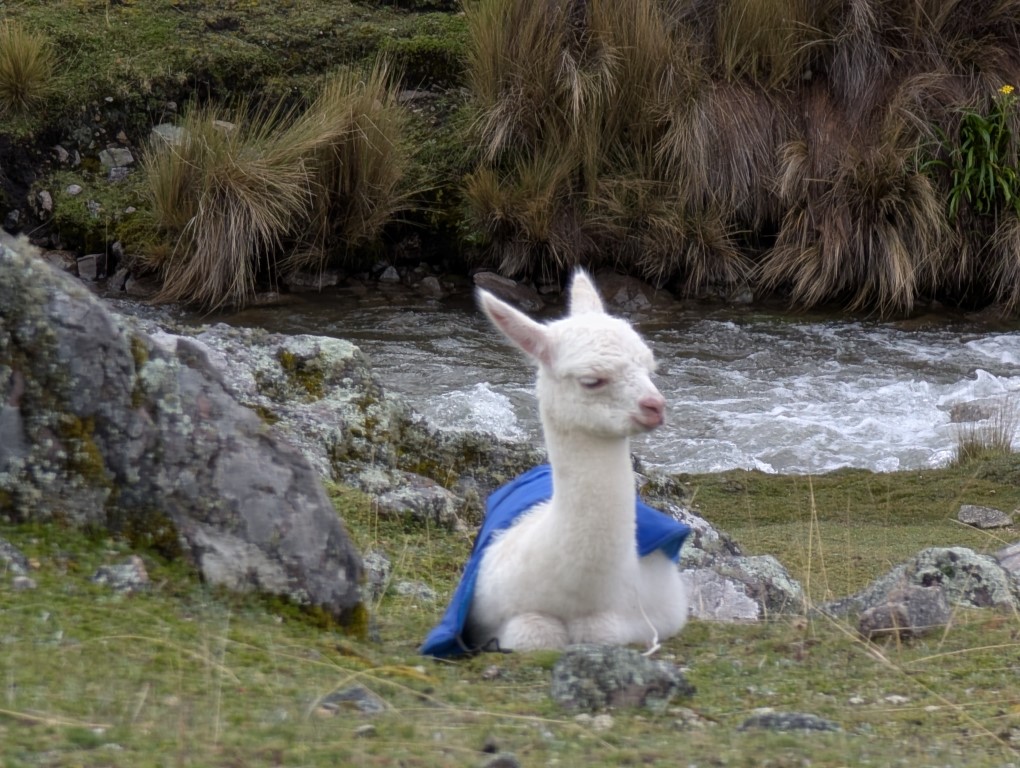
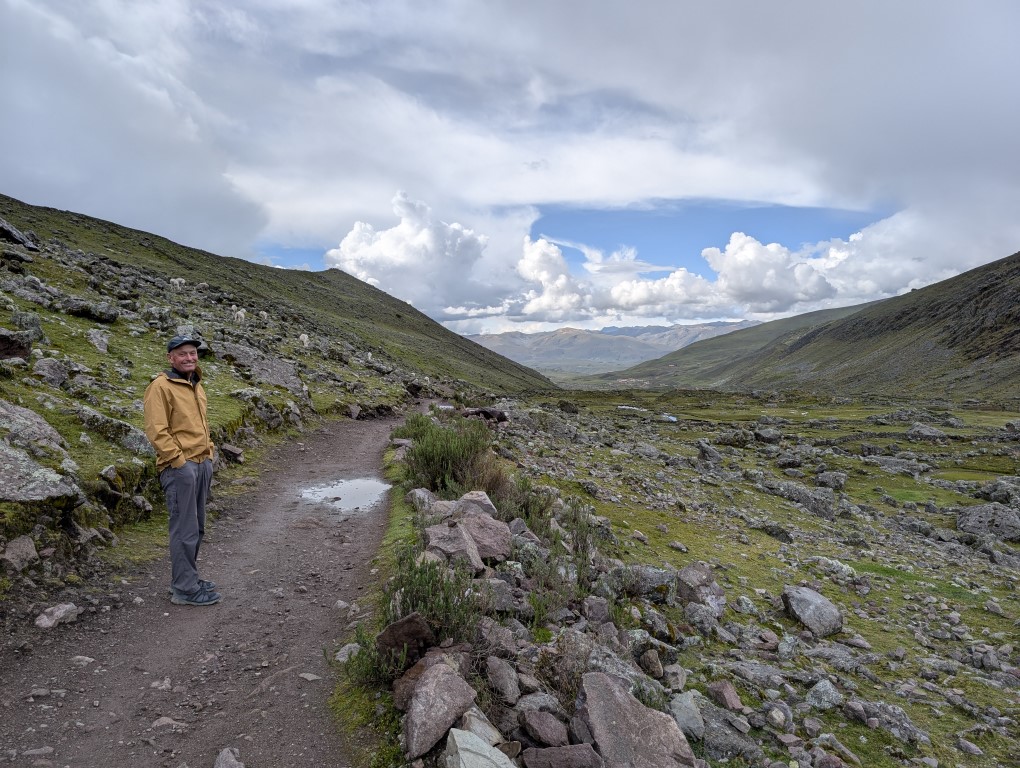
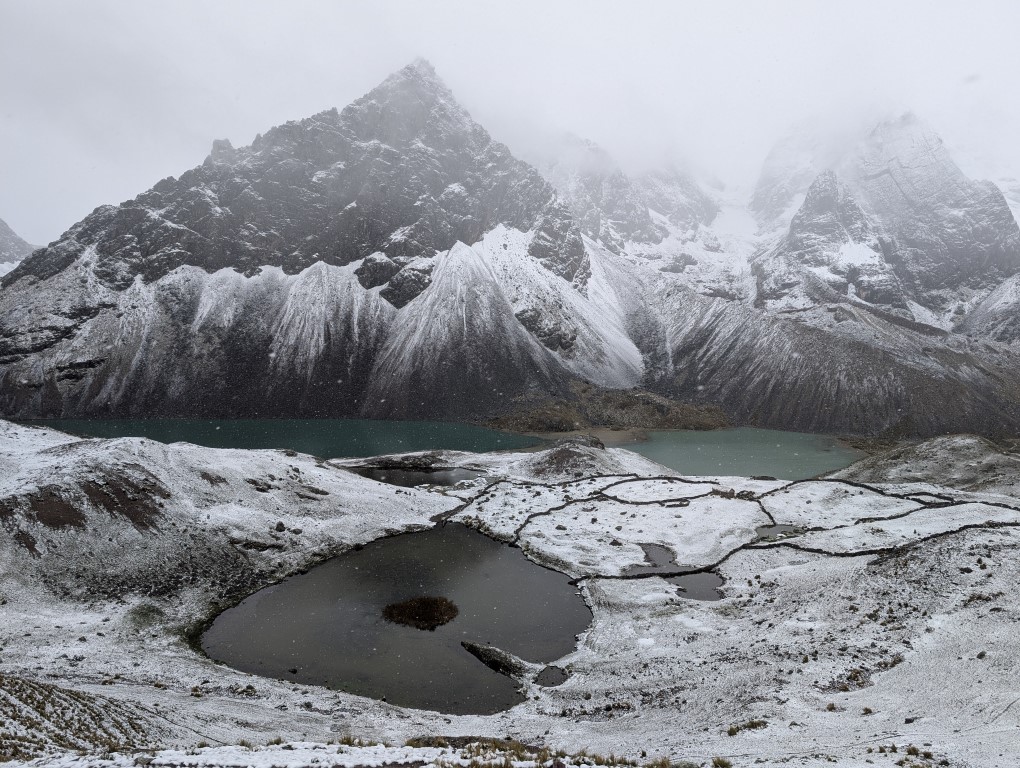

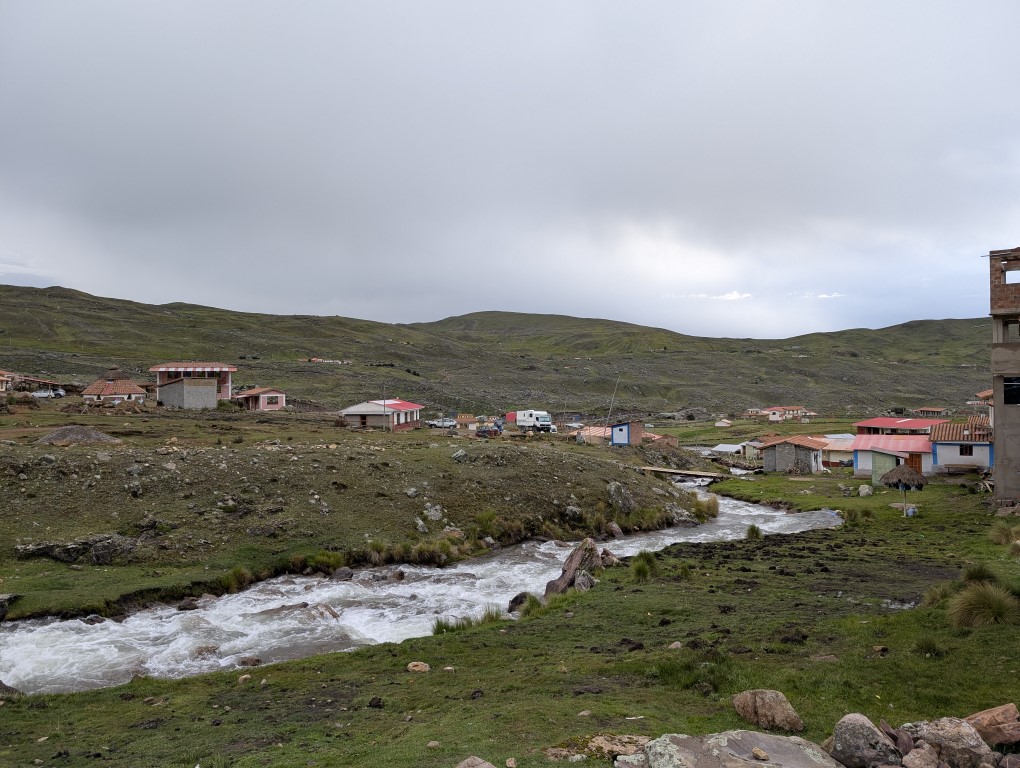
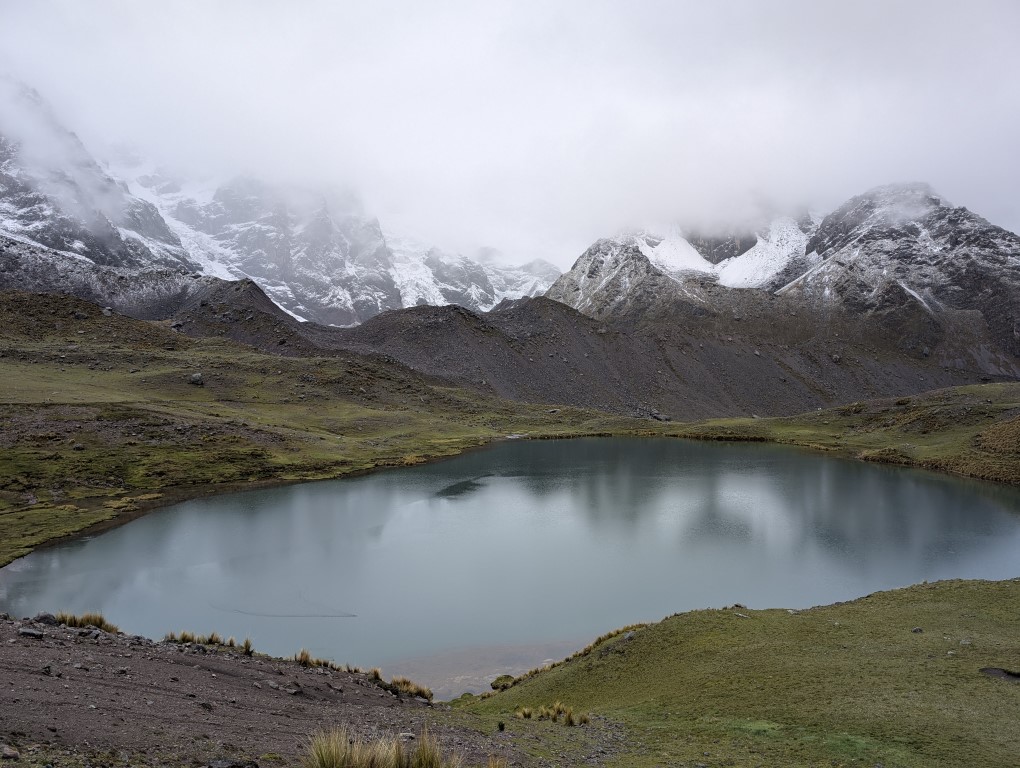
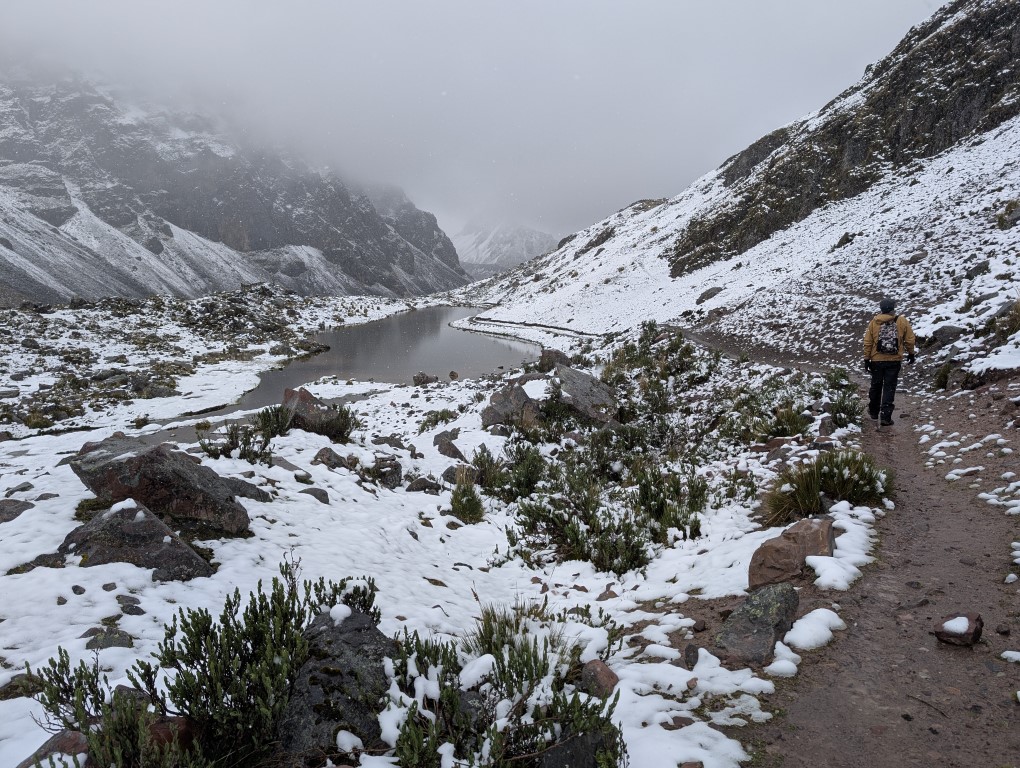
Ausangate is southern Peru’s highest mountain at 6400 meters. You can hike a 5 day loop around it but as it’s the rainy season, we weren’t interested. We did a day hike and got snowed on & rained on but still enjoyed ourselves as well as the warm shower waiting for us in the truck. Our heater doesn’t like working at 14,000 ft though We don’t really need it for ourselves because the box stays warm, but we do need it to preheat our engine. The baby alpacas wear little jackets which is the first we’ve seen of that. Camping in the little village at the trailhead, way up in the puna grasslands was kind of neat. There are all these hot springs in the town where the locals hang out. A different way of life.
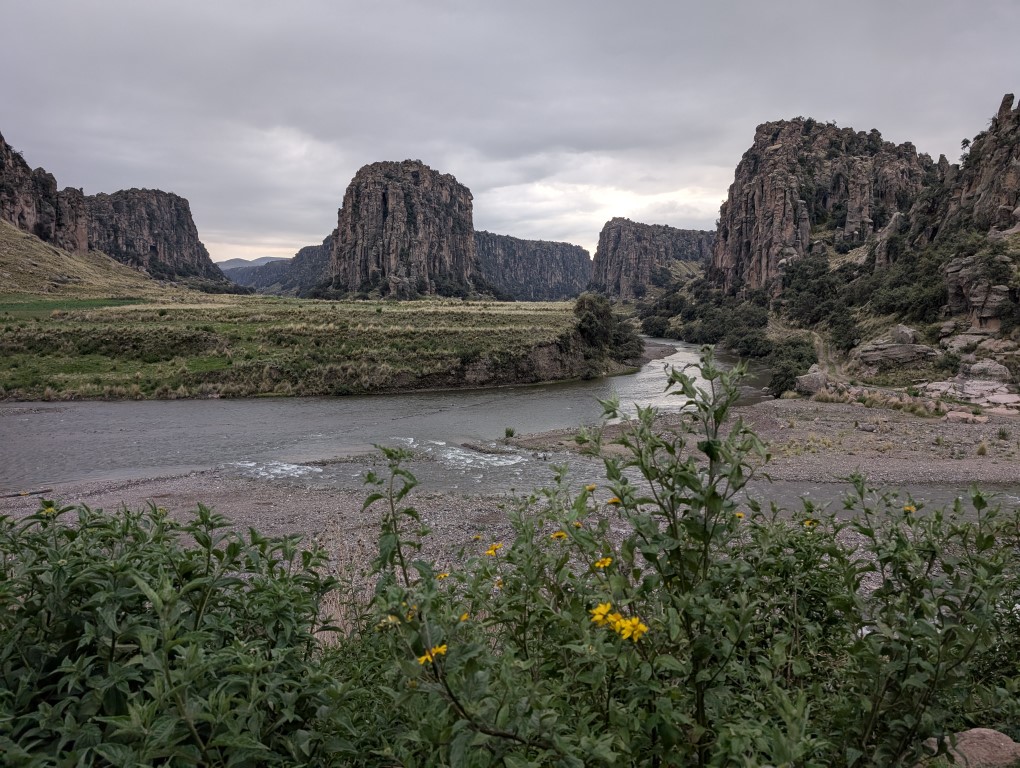
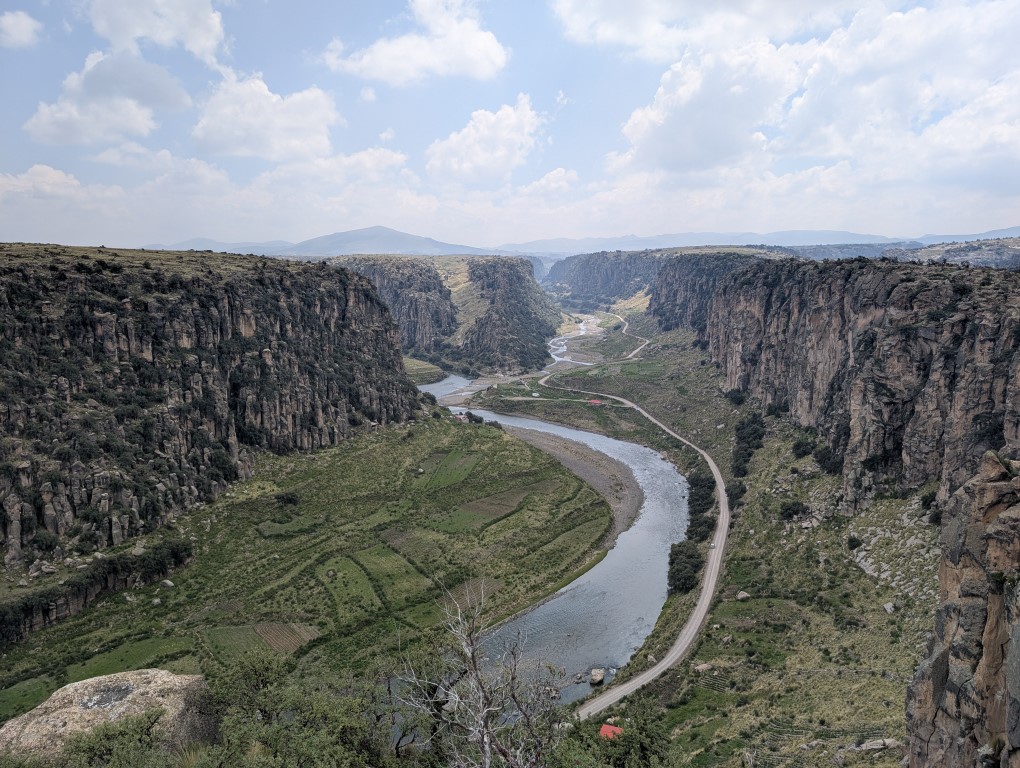
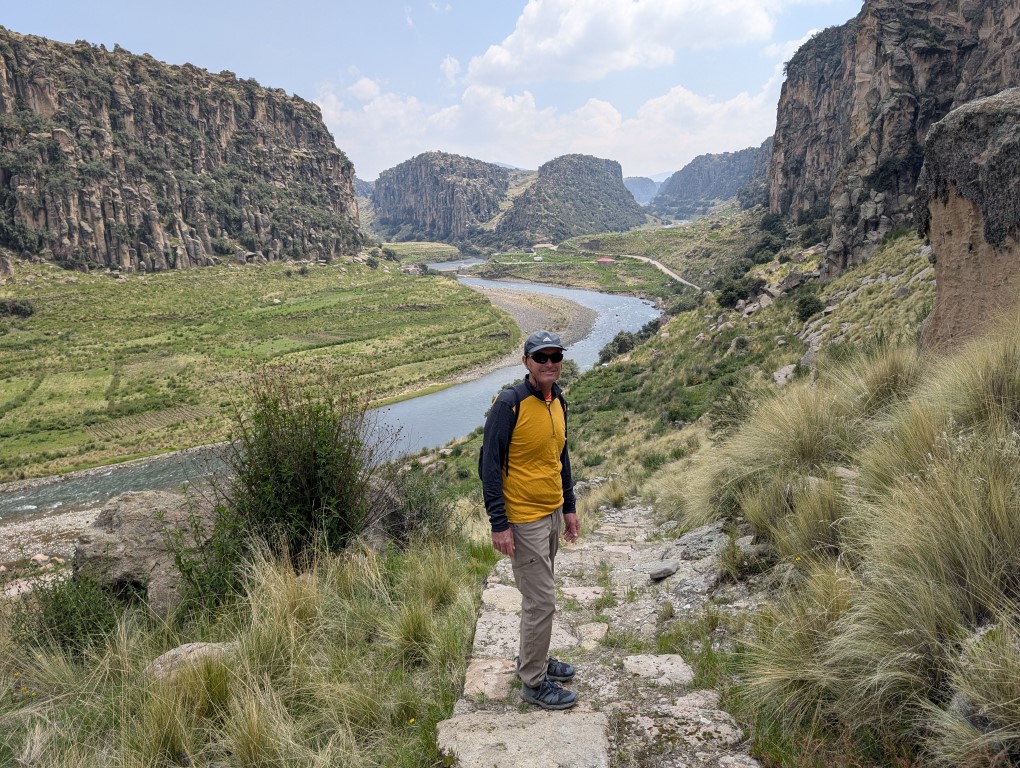
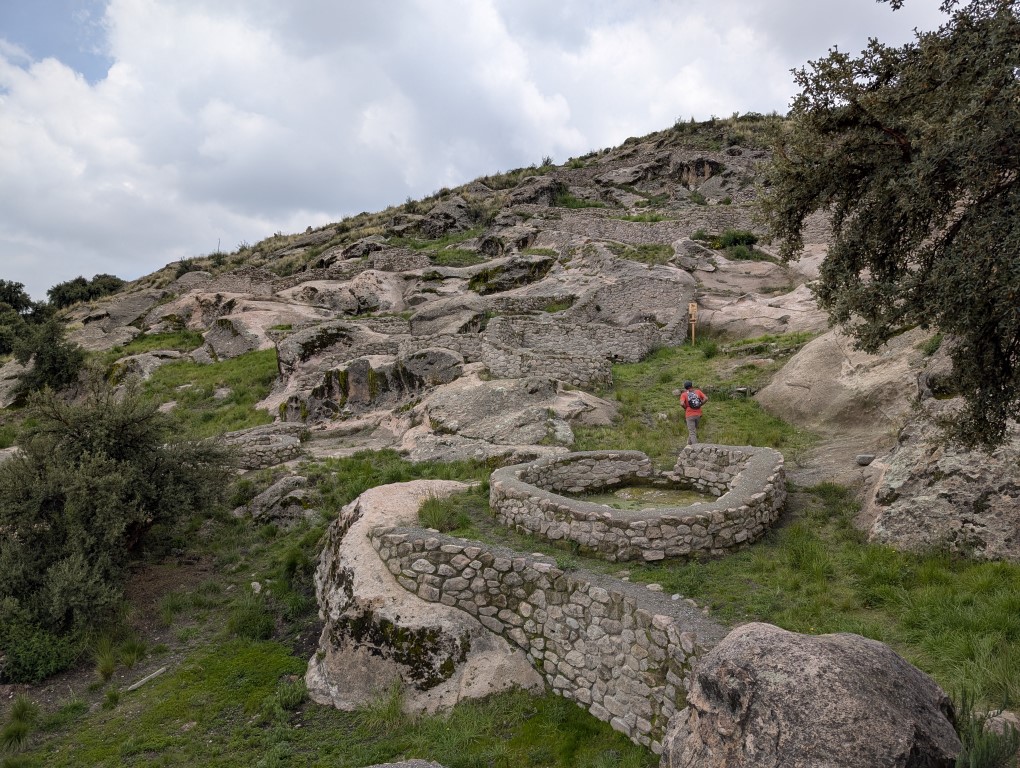
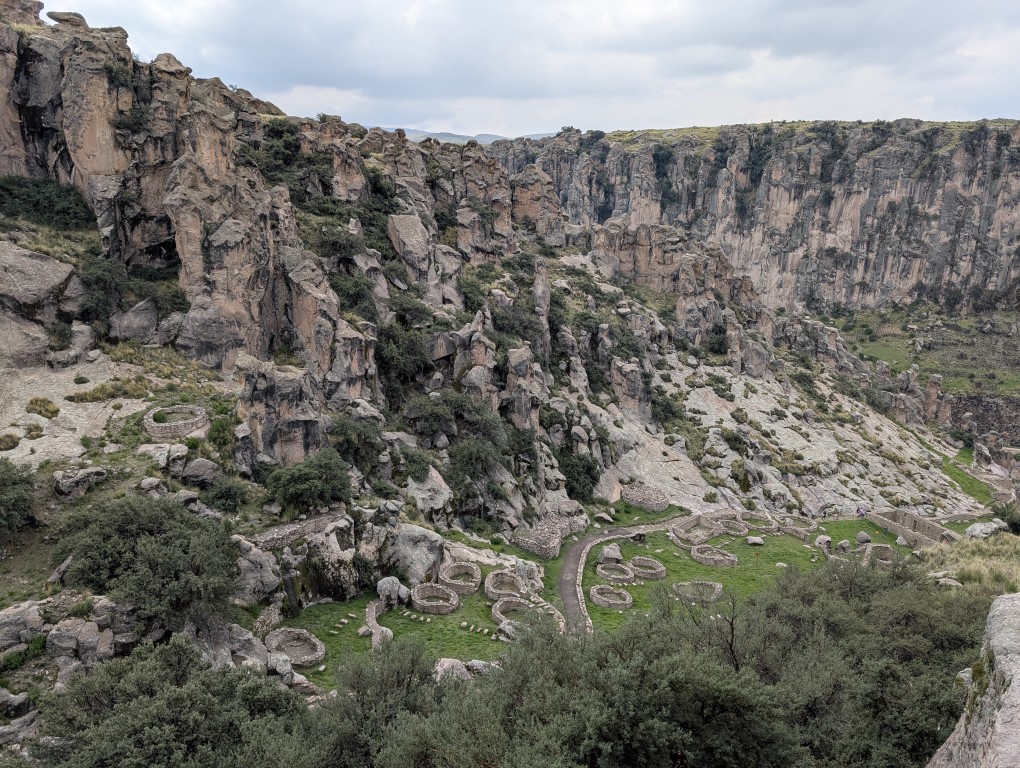
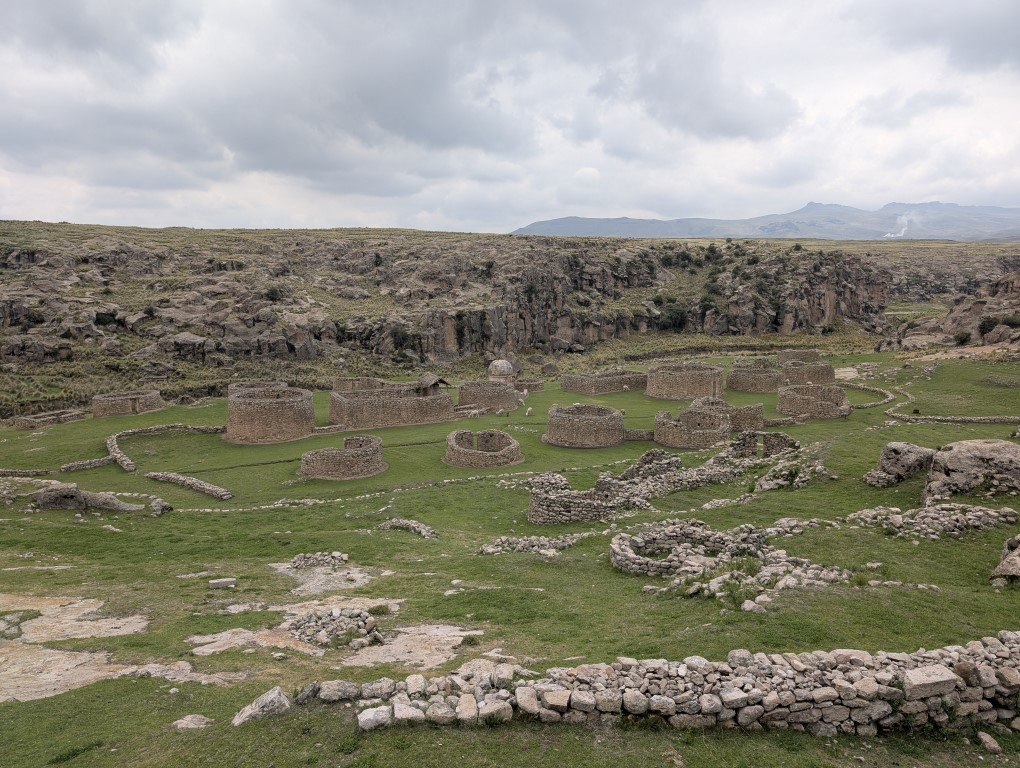


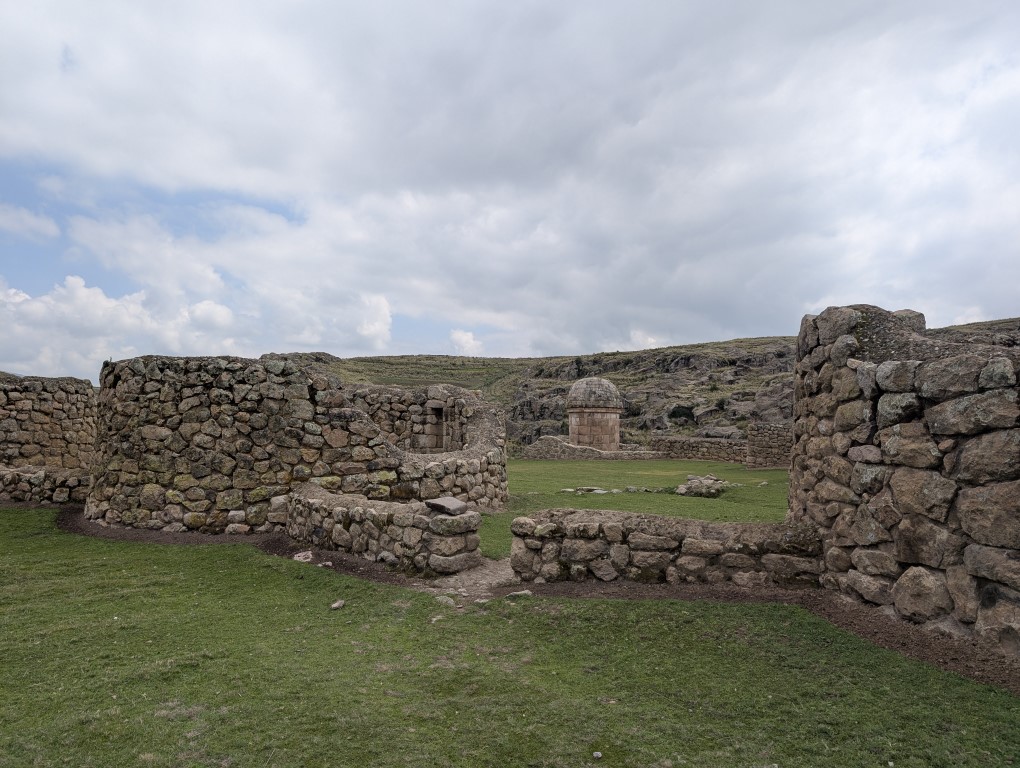
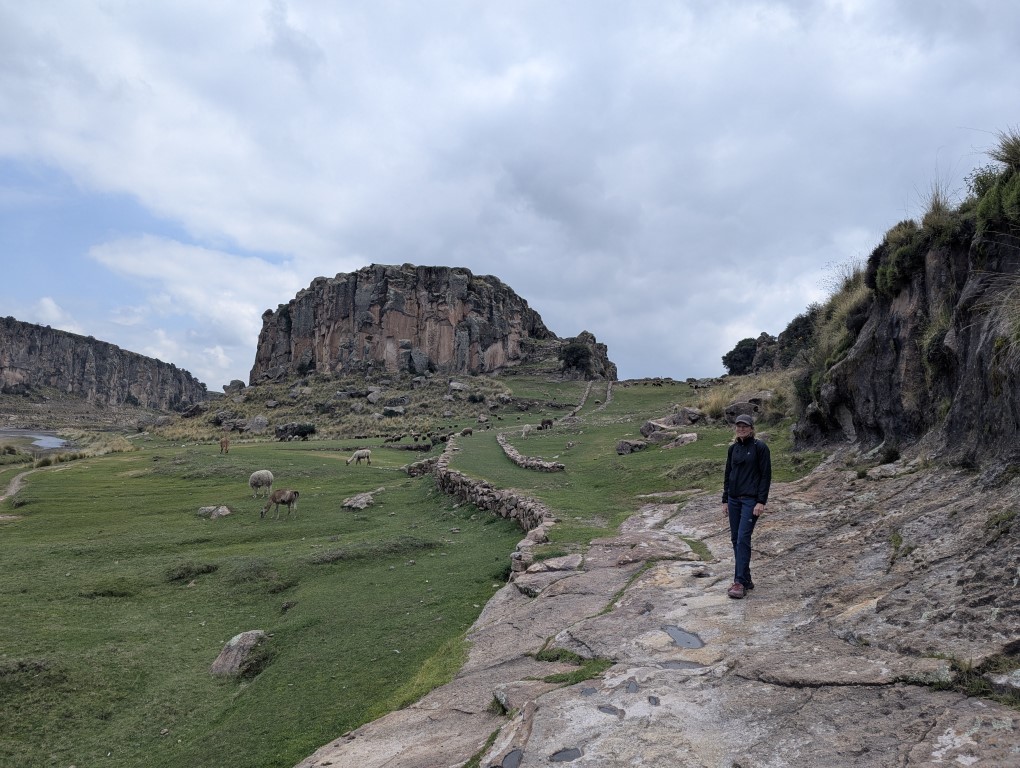

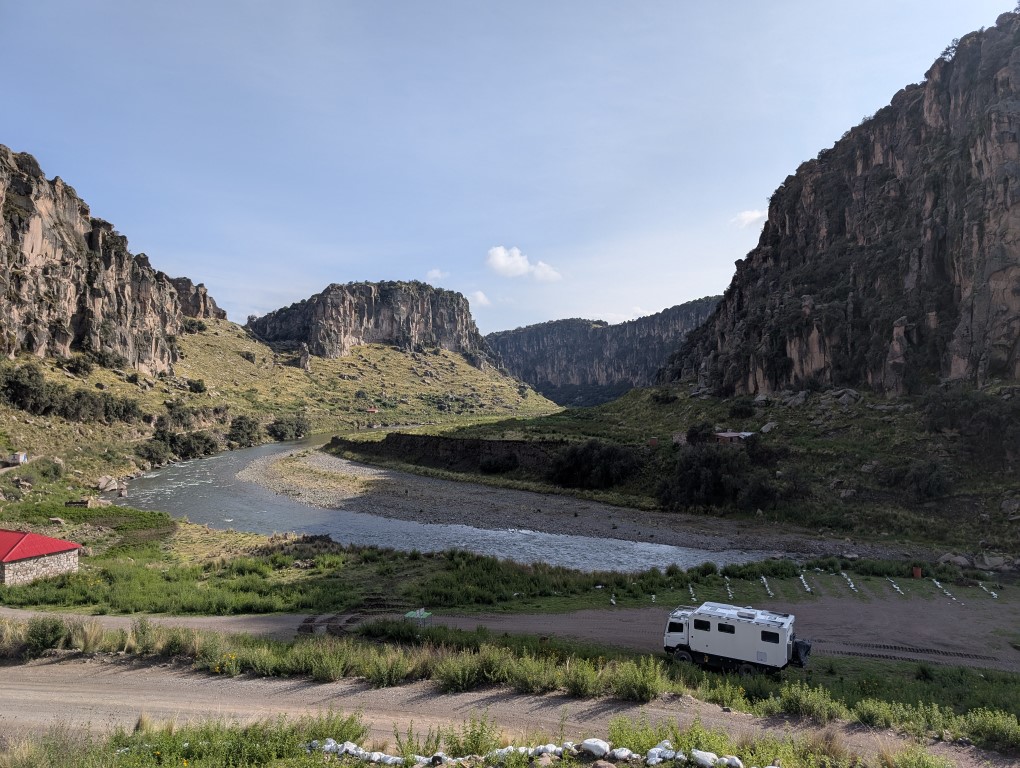
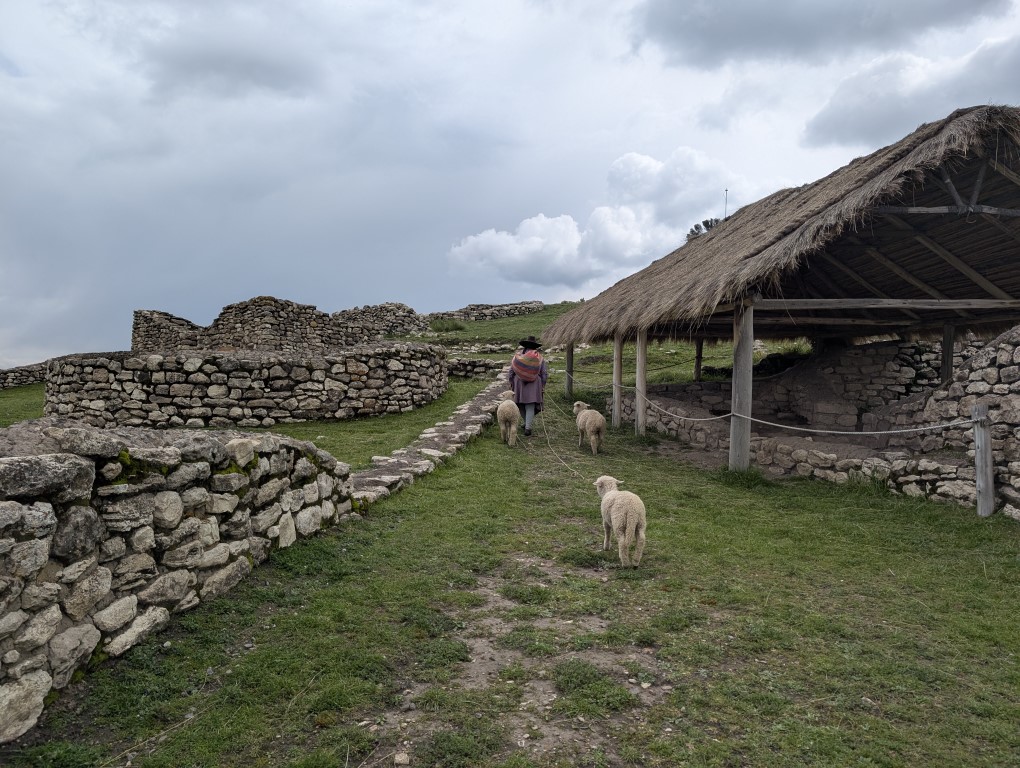
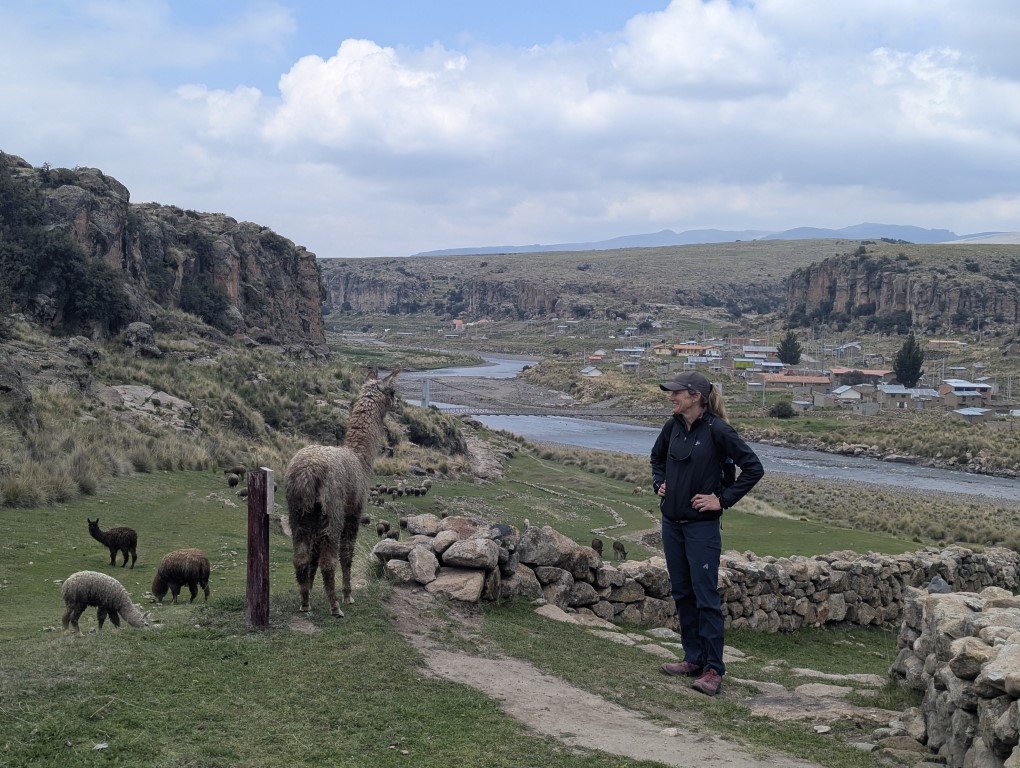
We headed southward to Tres Canyons Preserve. It’s a long, potholed road running through a stunning canyon and then you get to this part where 3 canyons converge and we could park right there. The little vilage has made trails, there are 2 significant ruin sites to visit, viewpoints and peace. The grounds of the ruins are kept mowed by alpacas & sheep. They add to the scenery for sure. Really impressive scenery and just what we needed. We loved it there. I really liked the footbridge because of the way they decorated it. Hunks of grass are woven onto the cables with hand braided rope to make a soft effect.
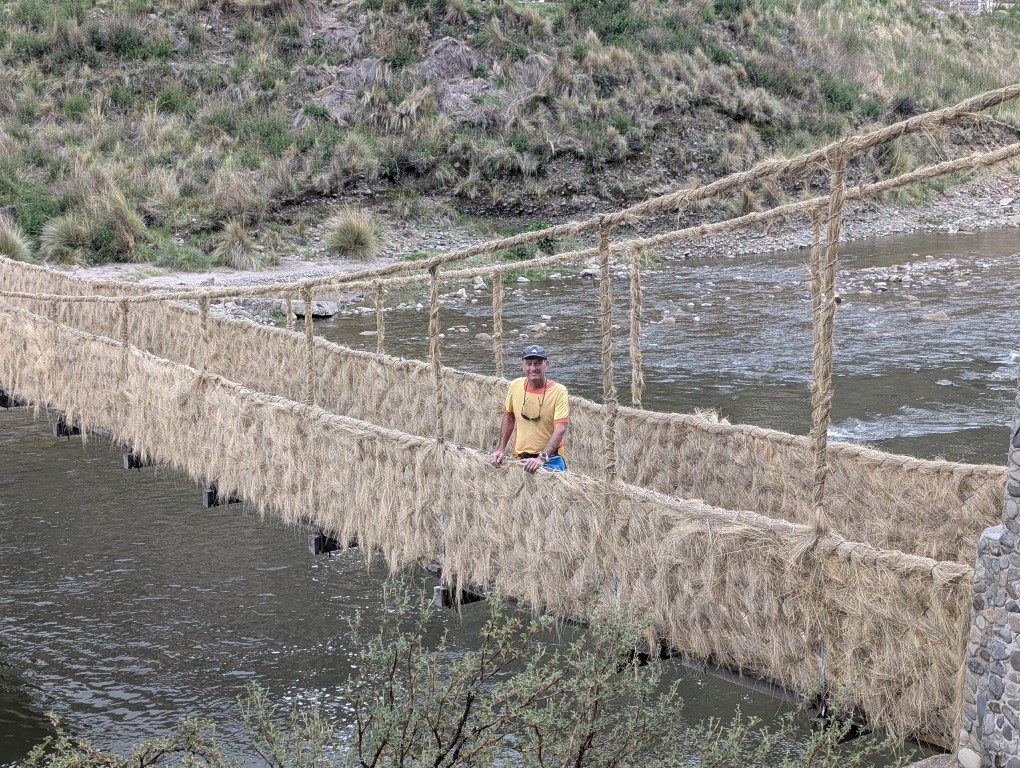
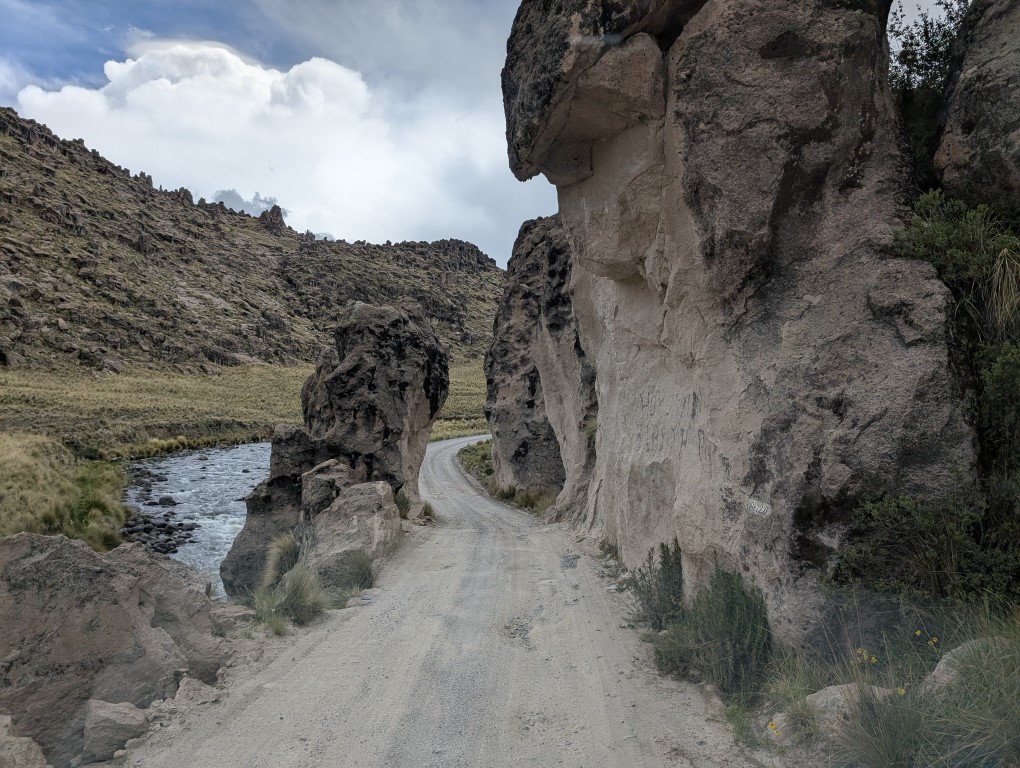
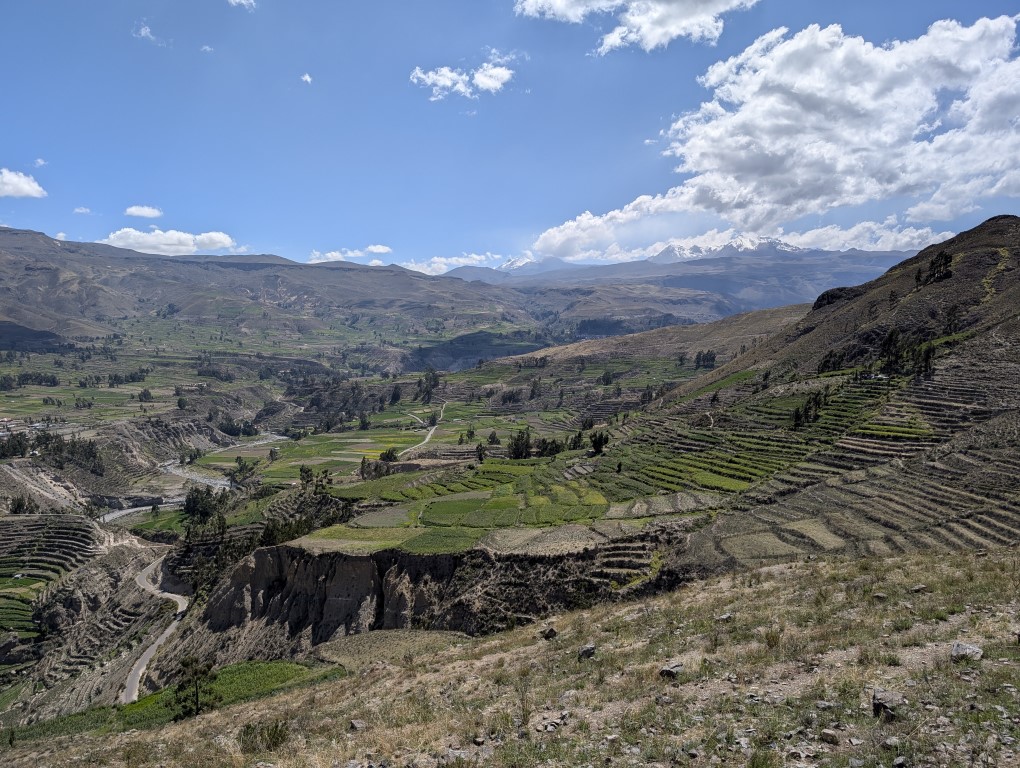
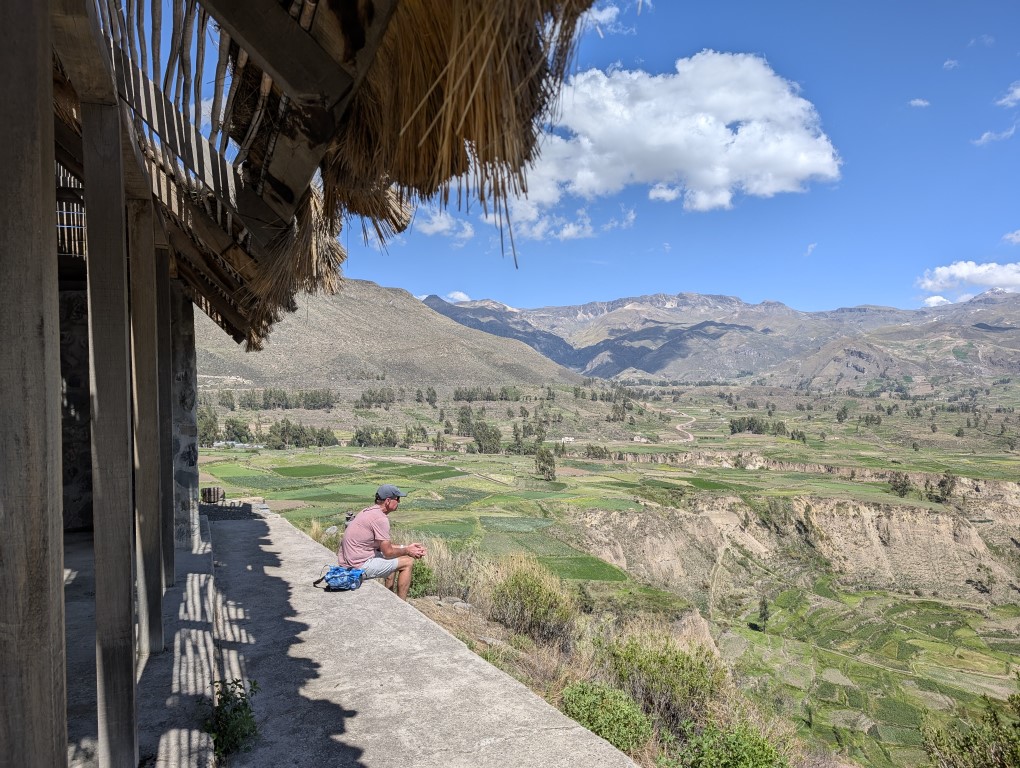
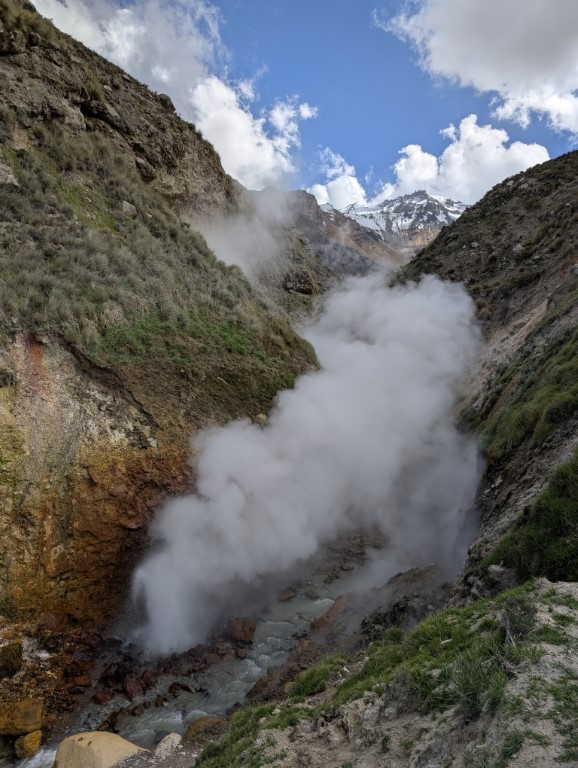

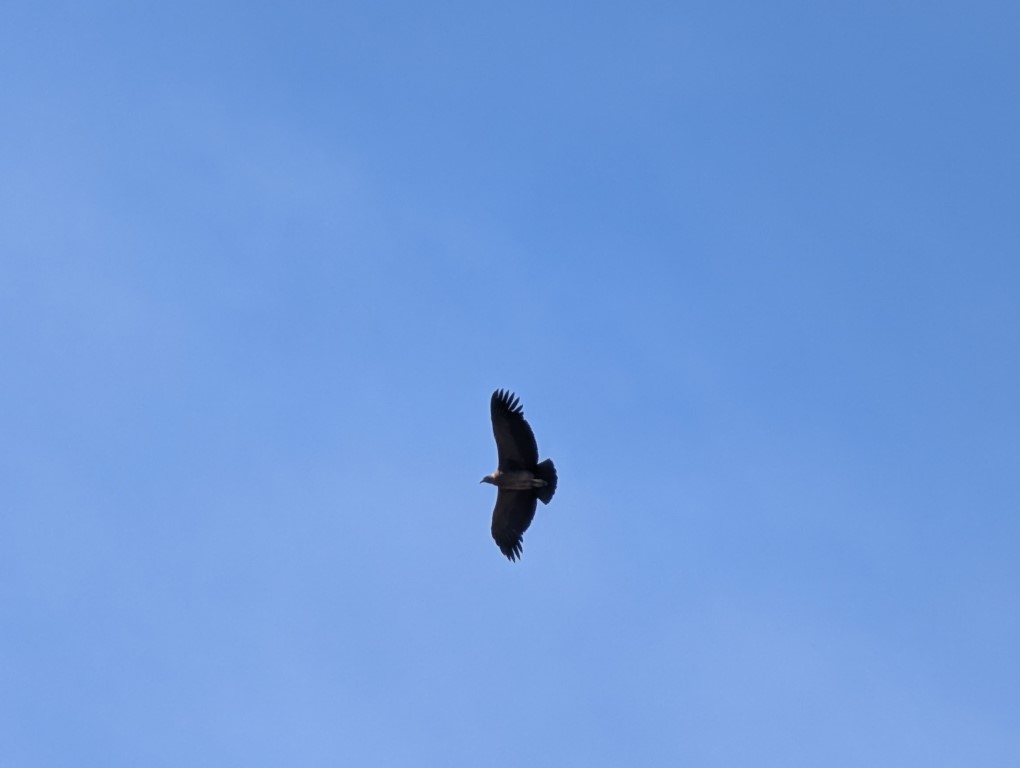
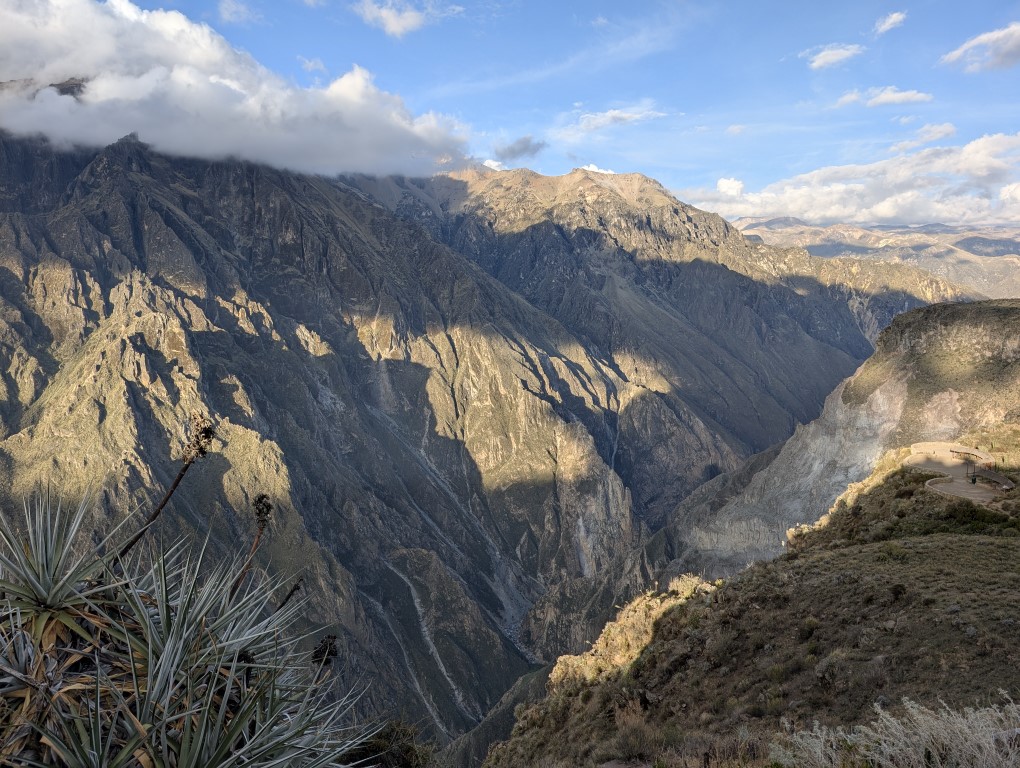

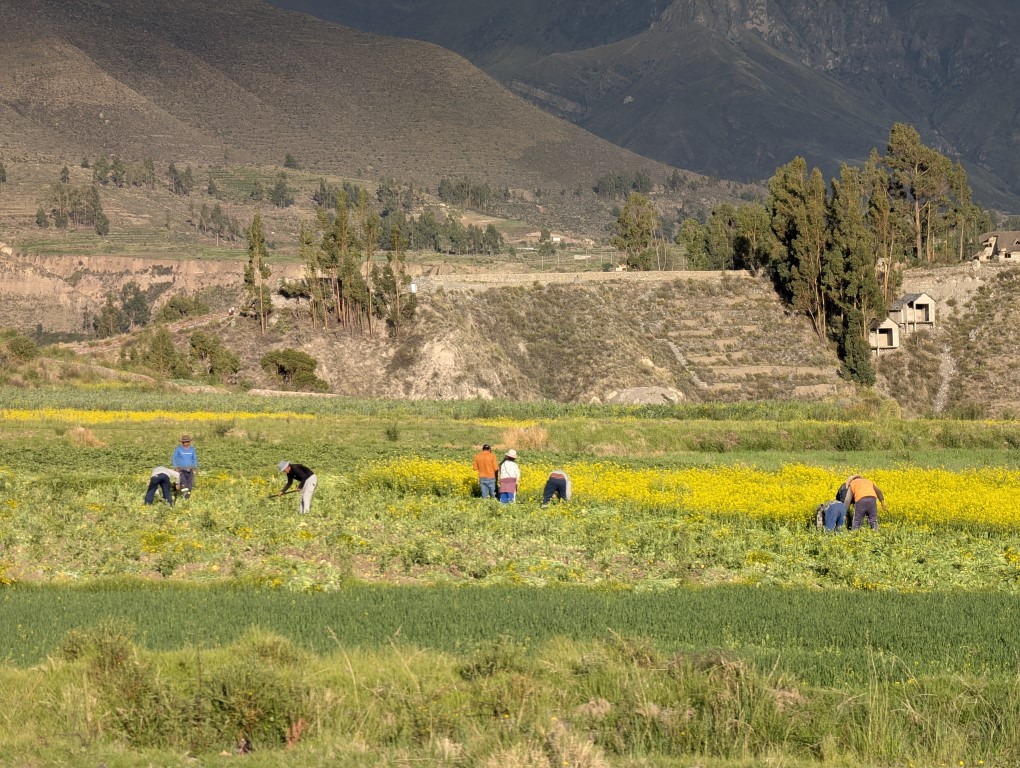

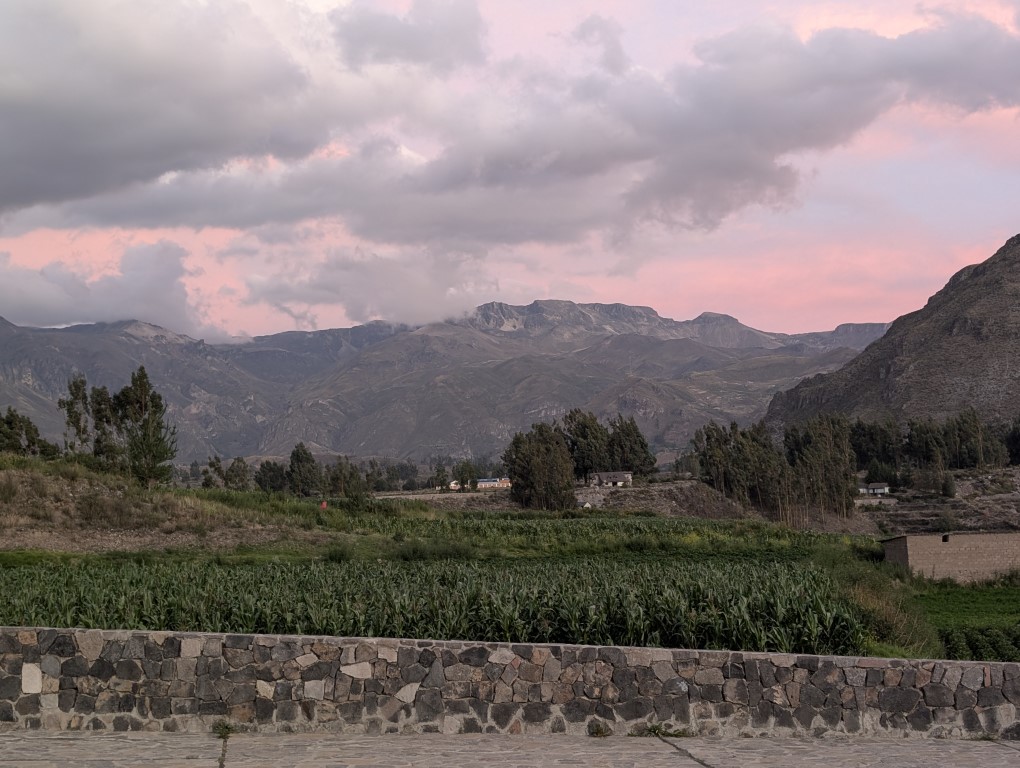
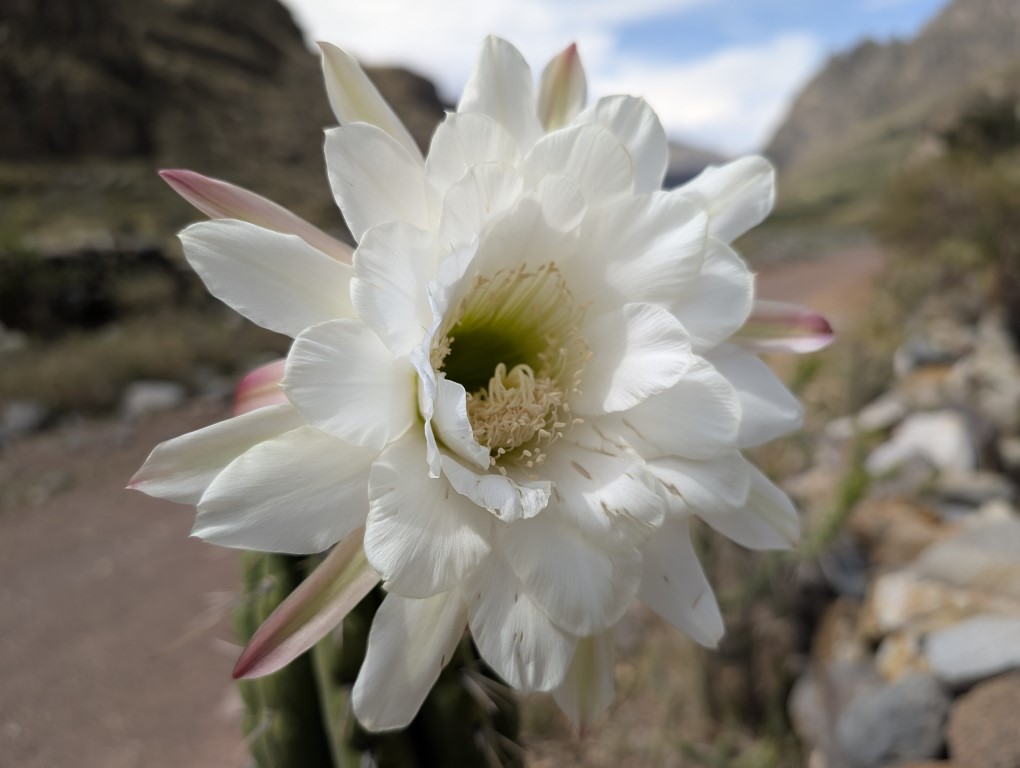
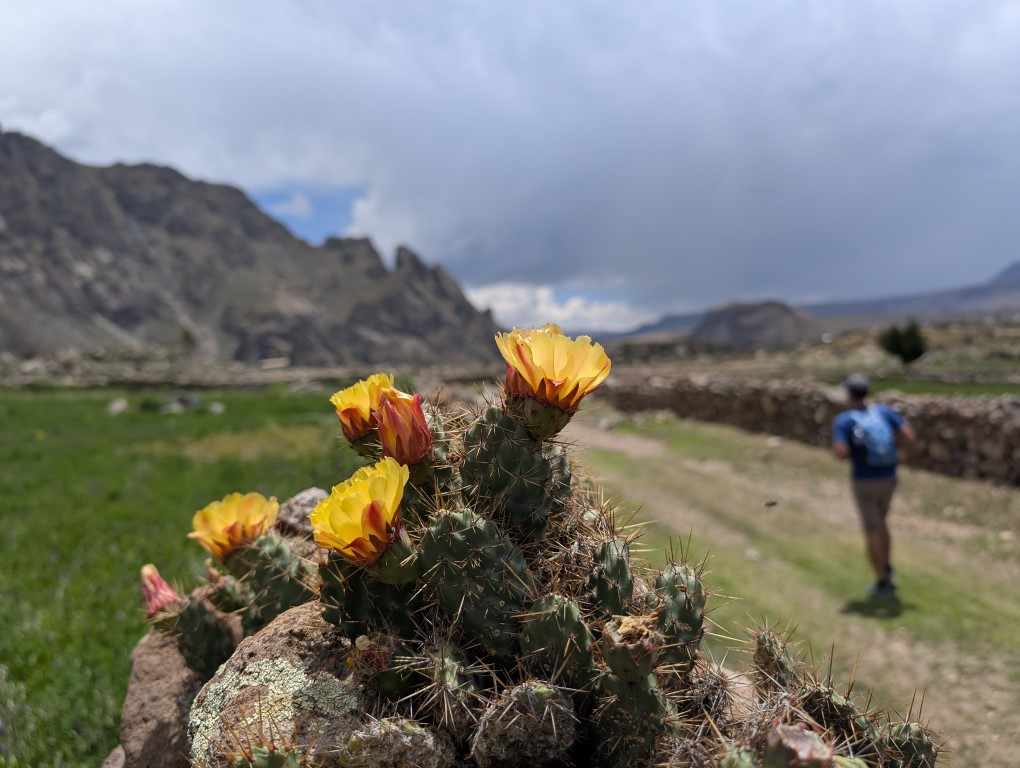
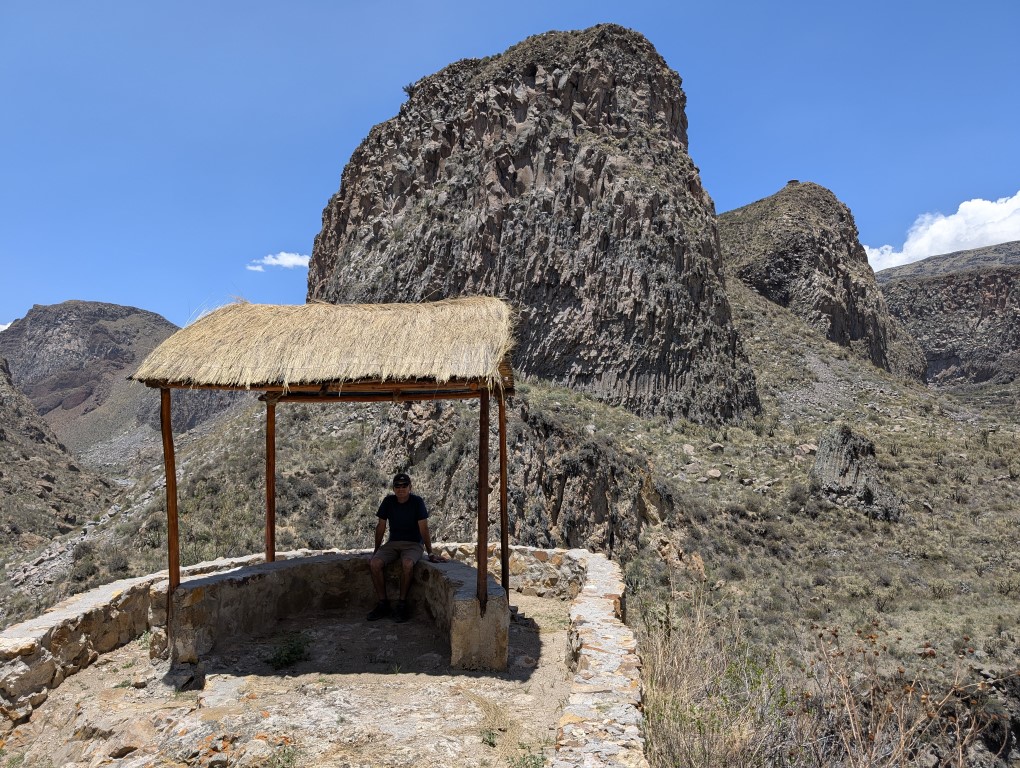
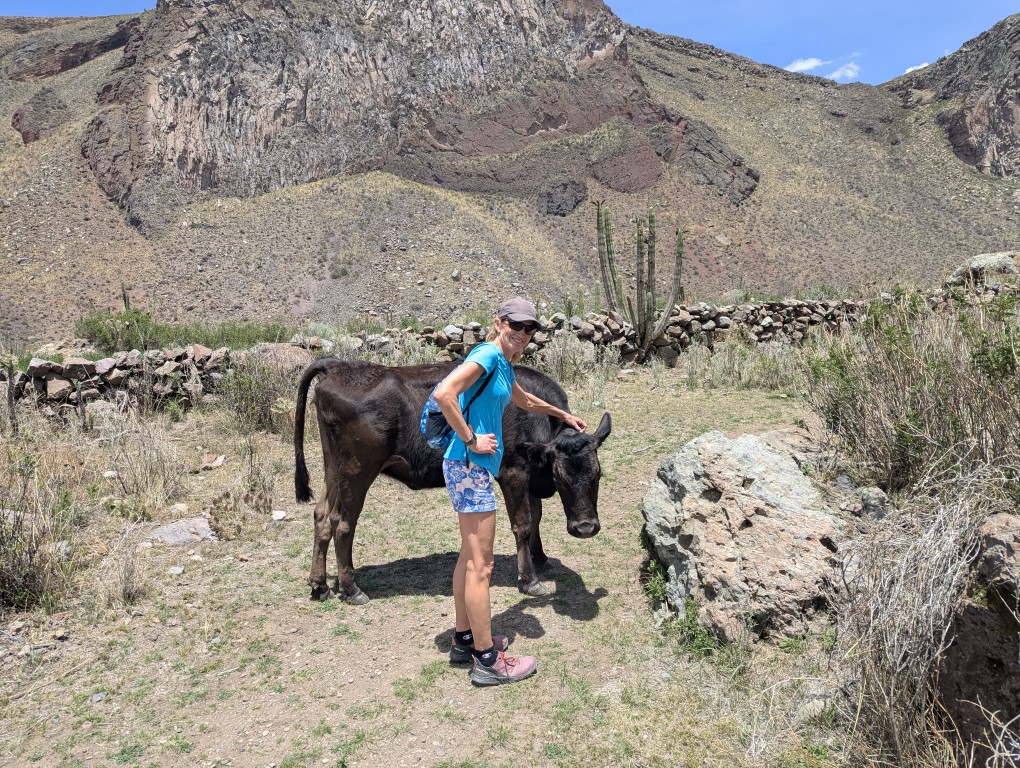
Colca Canyon is the big draw for southern Peru. I don’t know why everyone compares their canyon to the Grand Canyon because there really is no comparison from what I’ve seen but once again, Colca Canyon is reputed to be twice as deep. Well it wasn’t twice as exciting. Nonetheless, we enjoyed visiting the towns along the way and through the canyon like Sibay, Chivay & Yanque. We did a lot of hiking here of course. Sometimes along hillsides full of terracing for crops, through the ruins of ancient villages, along cliff edges looking for condors or past steaming fumaroles. It was very quiet around these areas as it’s off season and we only met one German overland truck the whole time. It was fun to talk about the places we’ve been and the places we’re each going. The locals have been very kind to us in Peru and we’ve felt welcome here.
There’s a healthy community of Andean condors living in the canyon and you can stay overnight at the viewpoint which is great for observing them in the neatest parts of the day- beginning and end. However, we learned that they are raising chicks right now down in the lower parts of the canyon so we hardly saw any. Out on a walk, we also found loads of cow carcasses. When we asked the ranger, he explained that they buy cows to provide food for the condors so that they can be sure to have food because they are after all, the stars of the show for Colca Canyon tourism!
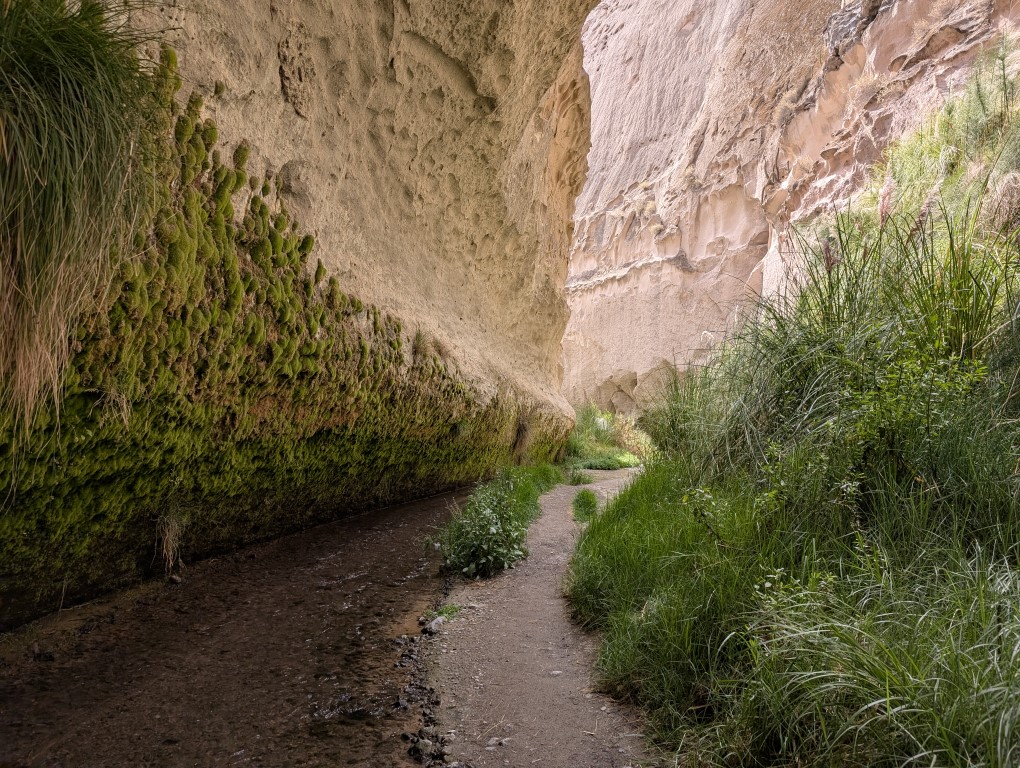
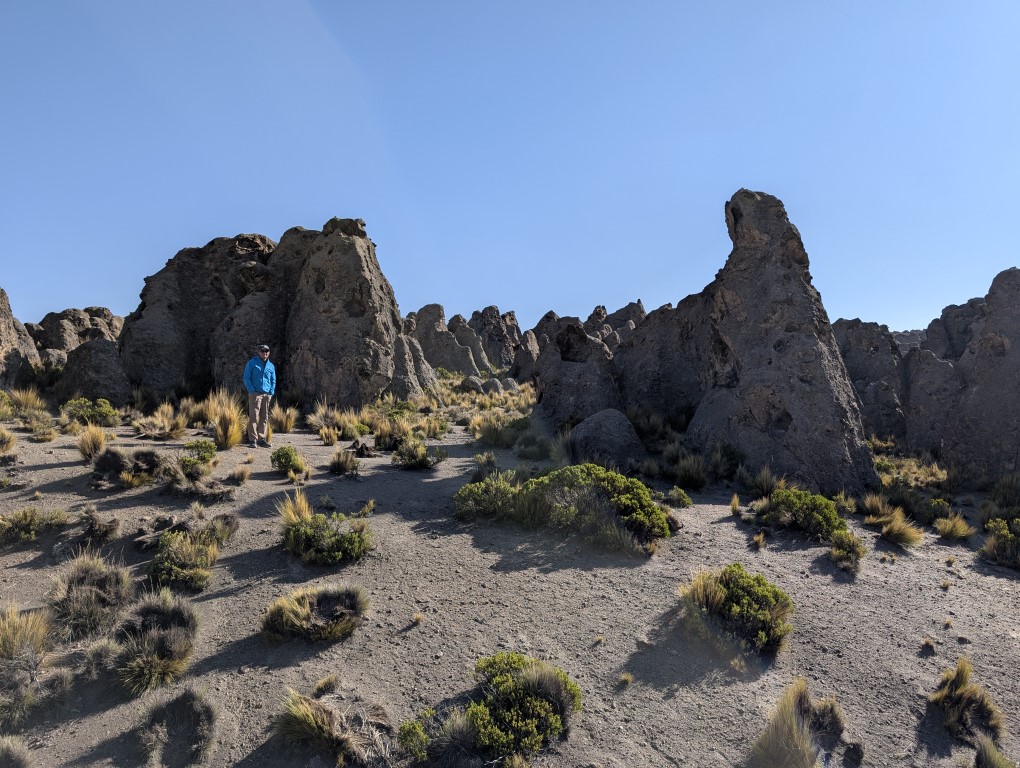
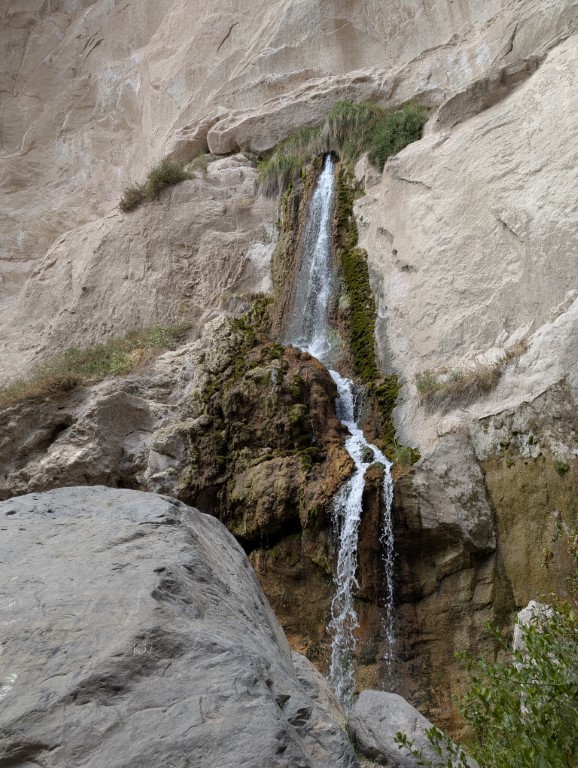
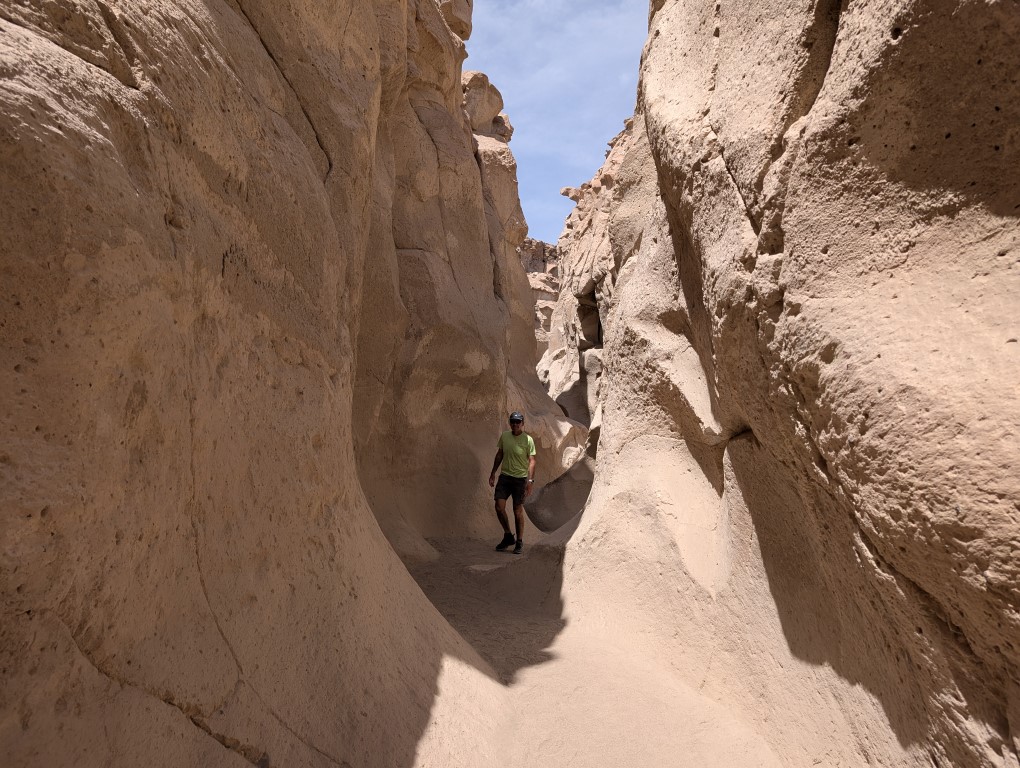

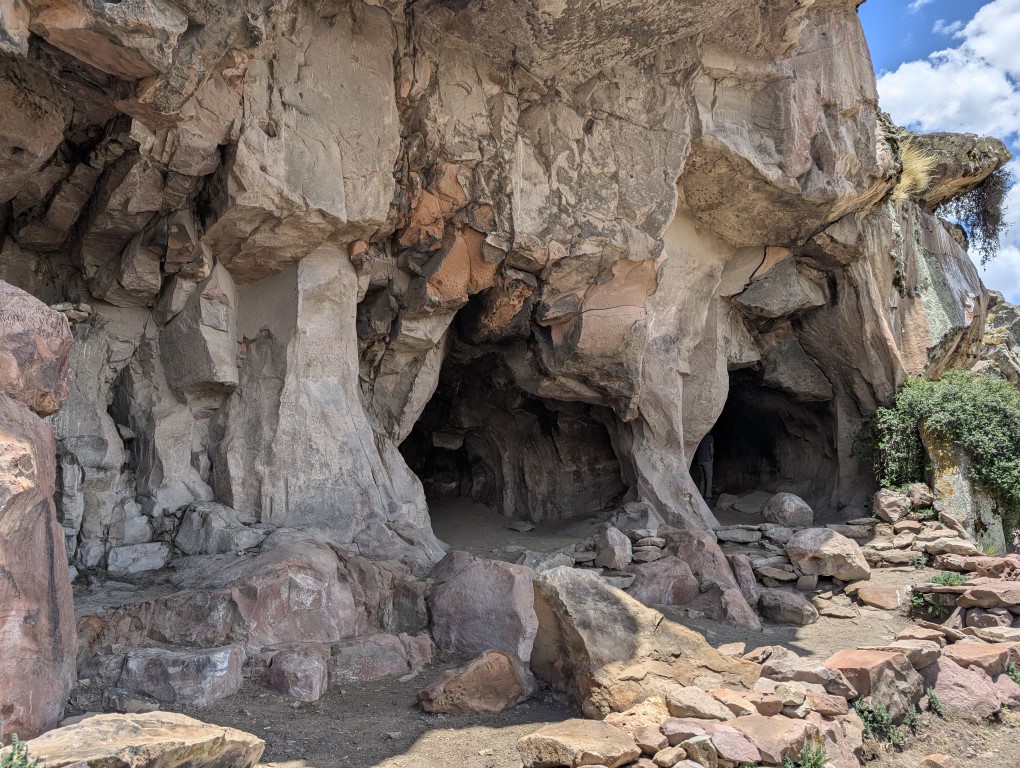
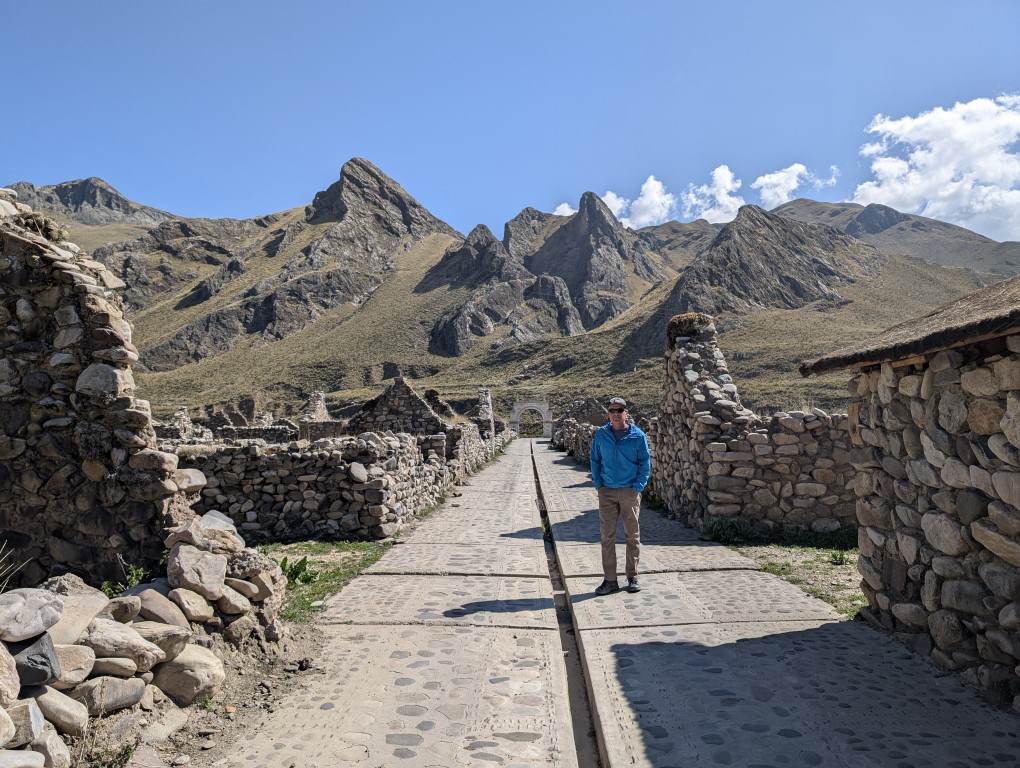

As we headed south toward Arequipa, we traveled some roads with various quiet attractions like waterfalls, caves and rock formations.
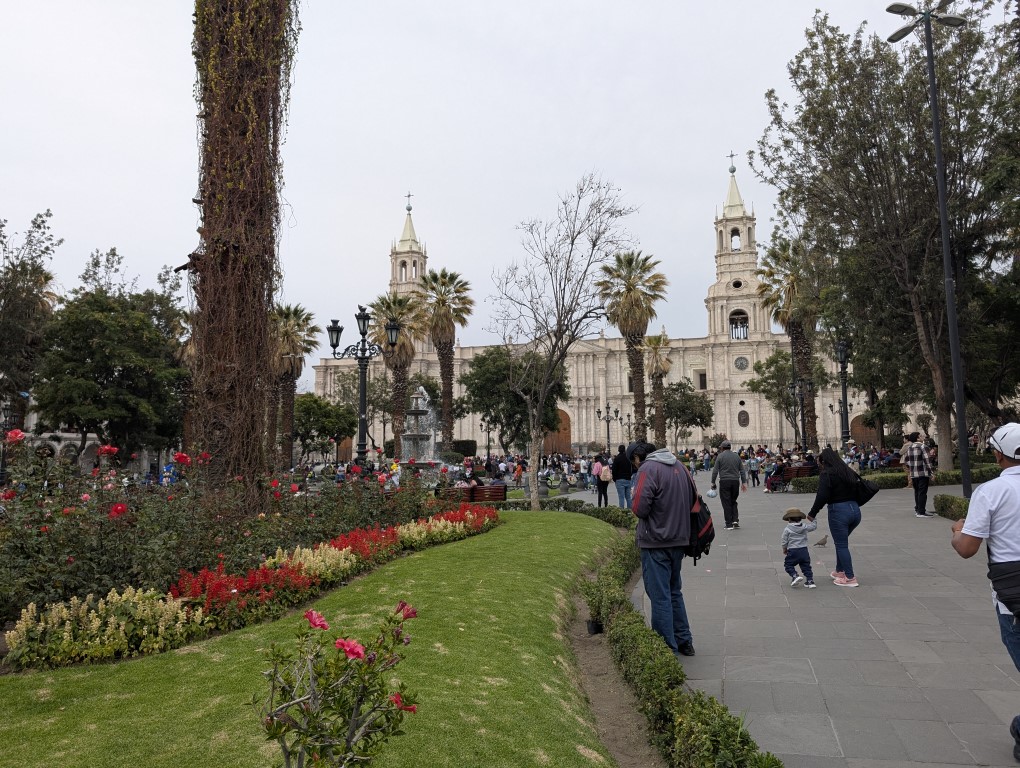
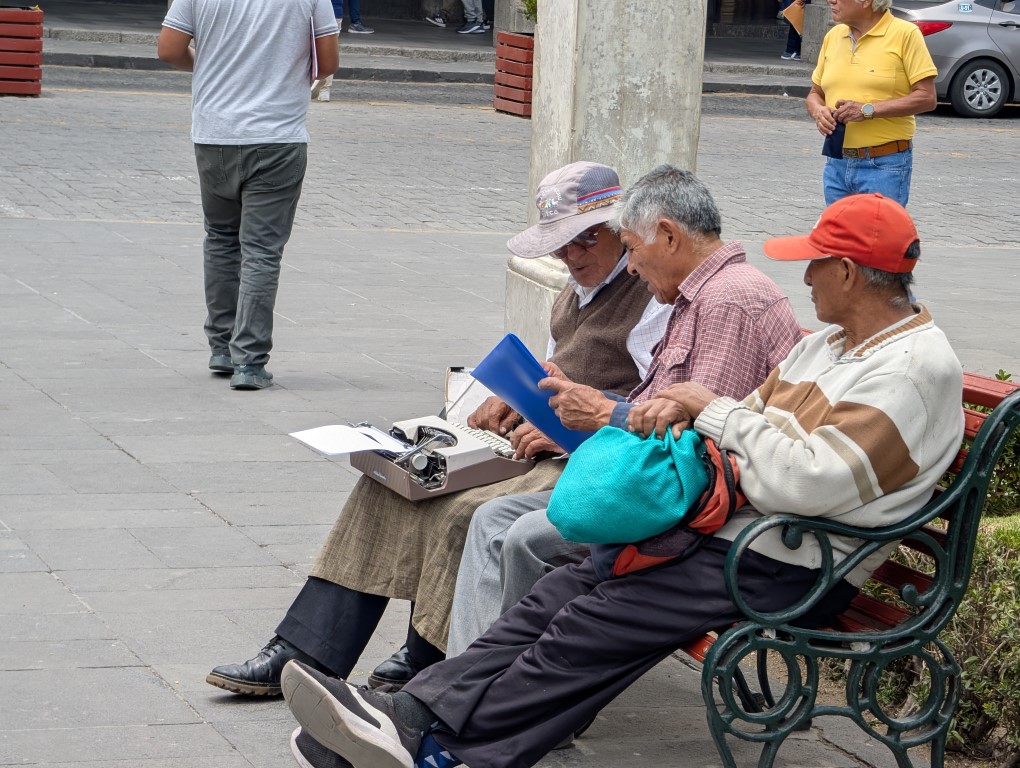
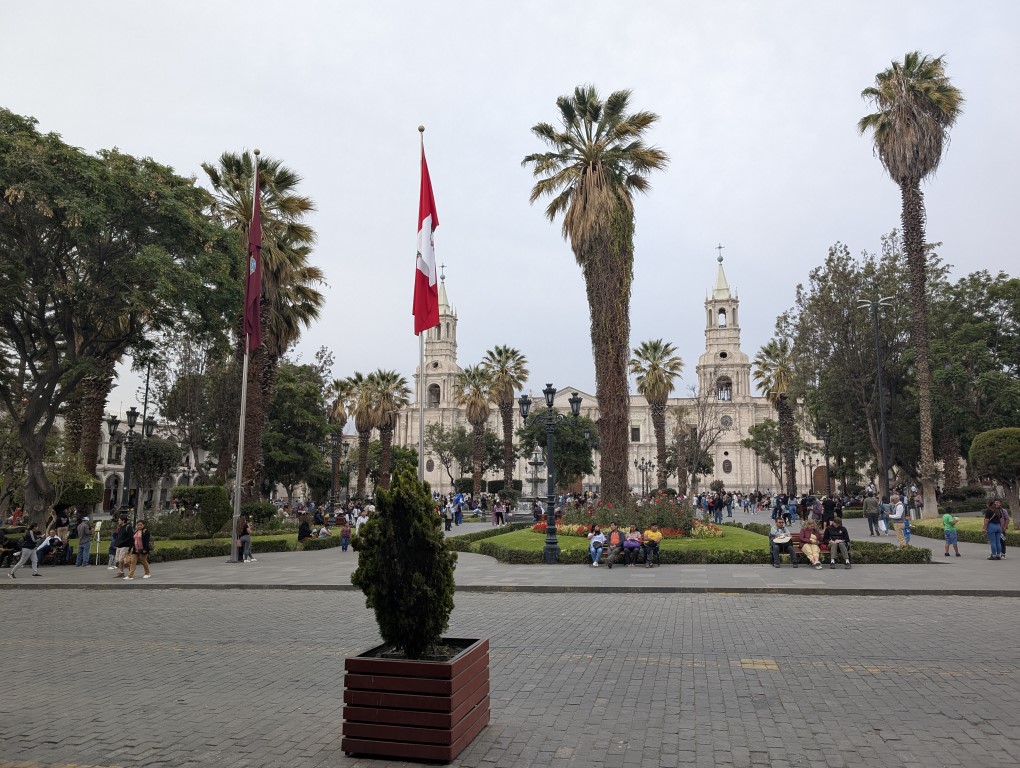
The UNESCO city of Arequipa is Peru’s second largest but it is still a tenth the size of Lima. Its called the “white city” because of all the white volcanic rock that was harvested to build it. We parked on a side street within walking distance of the huge plaza where the cathedral sits proudly. It was fun to walk around this nice part of town and take it all in. Here’s a funny thing: If you need something typed up like say, an important document, you come to this plaza and sit down on a bench next to one of several men who are holding an old fashioned typewriter. Like, the non-electric kind! It’s hard to believe but yes, this is how it’s done. One of few plazas we’ve been to that don’t allow any traffic, we enjoyed the quiet feel of it.
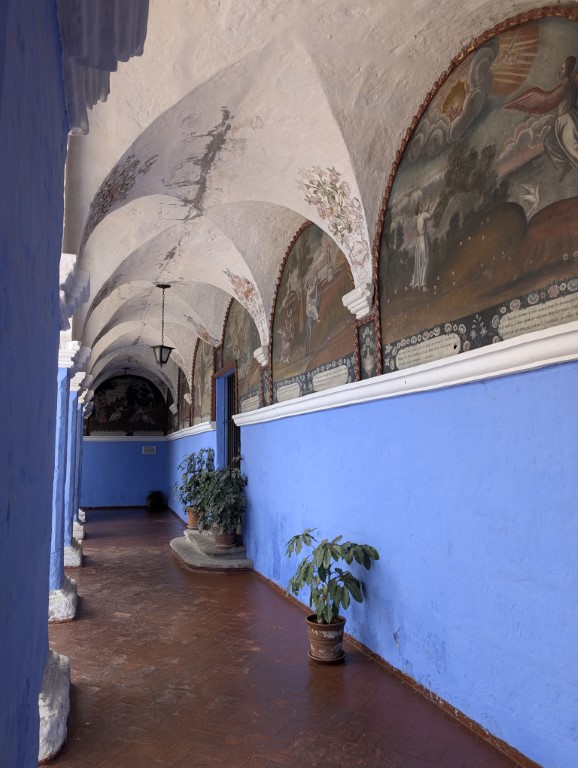
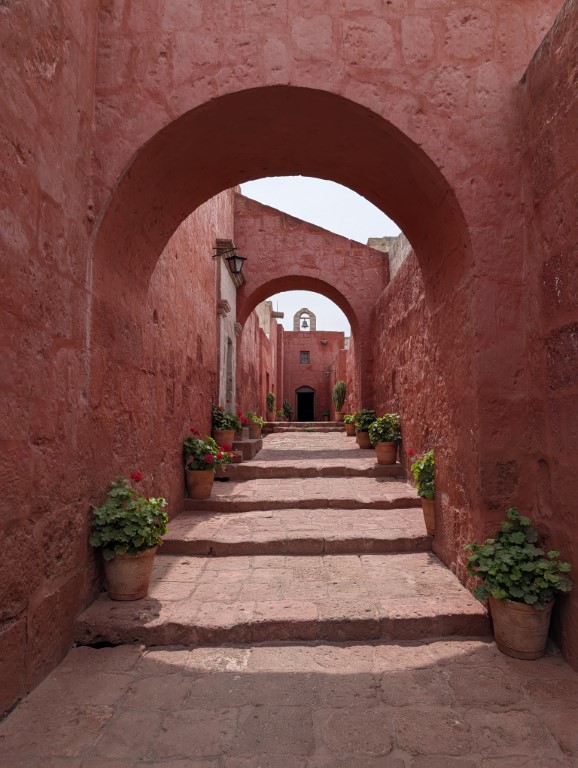
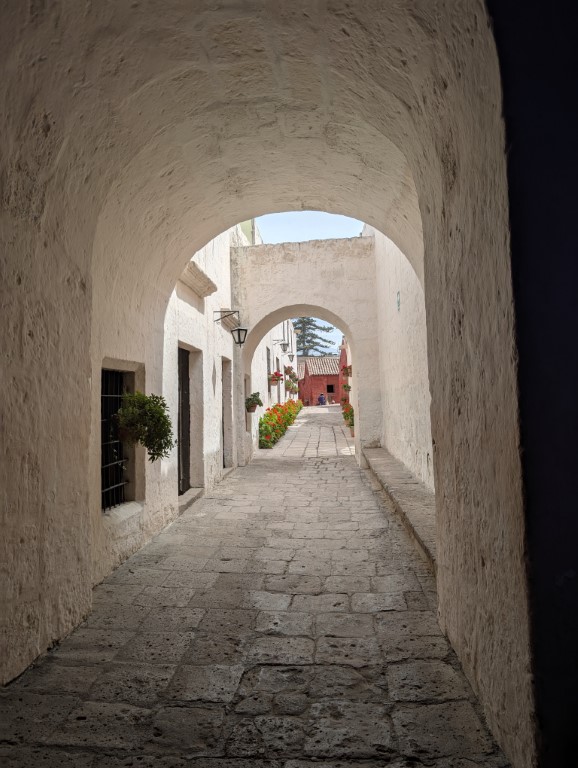

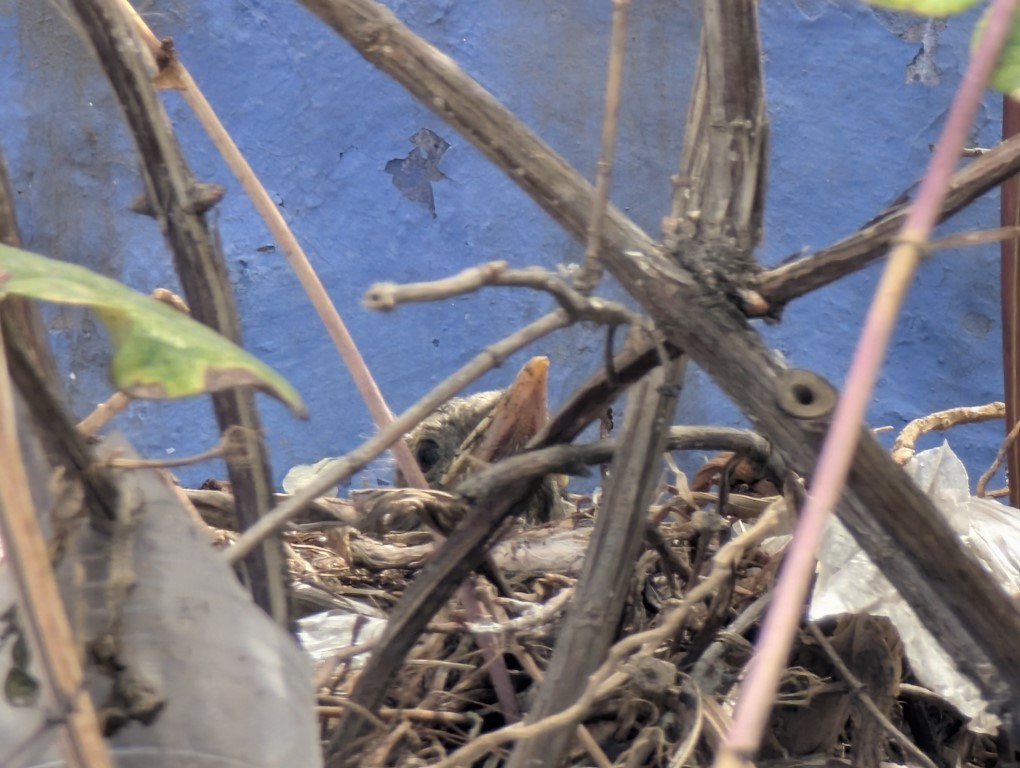
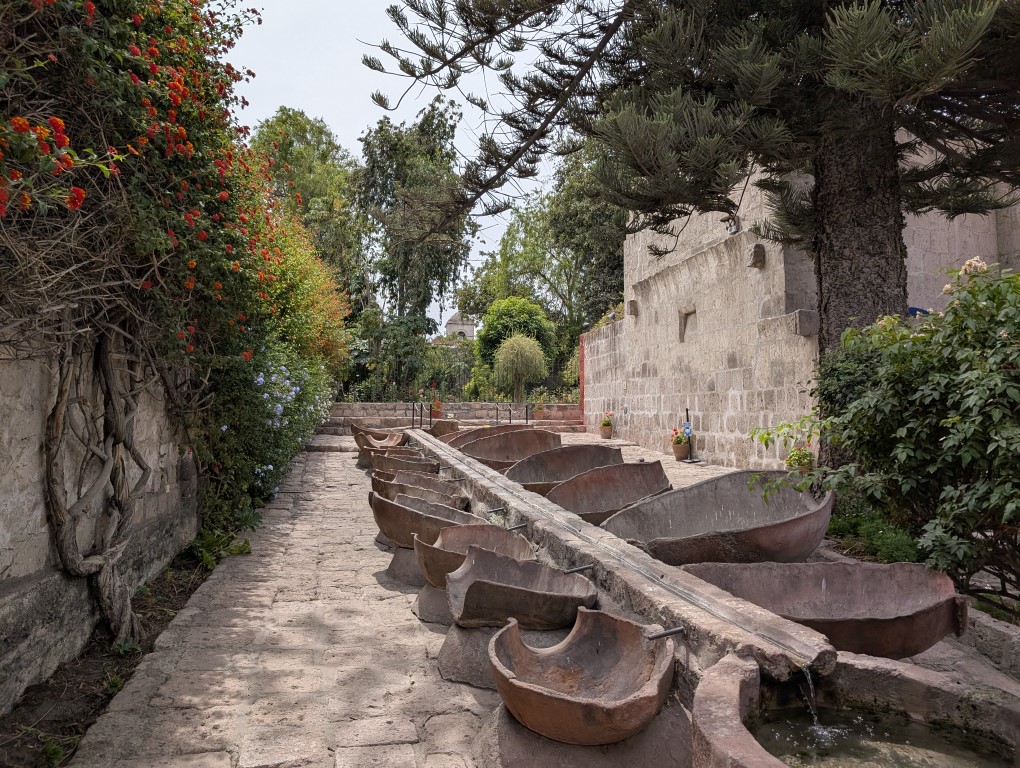
One of the main attractions is to visit the Santa Catalina Monastery. It takes up a whole city block and is known as a city within a city and is a large reason why Arequipa became UNESCO. It was founded in 1580 by a rich widow, Maria Guzman and it operated for something like 390 years. Not being the religious type, the reason we wanted to see it was because of it’s vastness and the architecture within. They have several “streets” inside the walls and loads of pretty flowers among the arches. We took a couple of hours to roam the avenues and got the idea of what it would be like to live locked up there but we could never understand why any woman would want to. A small portion of it still functions as a monastery- creepy! The birds liked it there too!
Arequipa is known for some good restaurants, so we went out for a great lunch after the convent and then headed out of the city to a Pacific beach. The problem with the beach is the trash. What looks like a beautiful view in pics isn’t entirely what it looks like in person. We spend a fair amount of time trying to understand littering. And also trying to understand the kind of littering that we encounter in Peru, the coast being the worst. How DO you put so much trash in every single corner of a place? How is it that there can be so much construction debris piled everywhere you look? Where DOES that come from? How DO truckers pee in a bottle and are Peruvian truckers the ones who started this worldwide craze of peeing in a bottle? And why do they toss it out of the window onto the side of the road? We do not know. There is so much going on today that we don’t understand but we are thankful that we have the time to ponder it all, or not, and to have our days open to whatever we want to do, wherever we want to go, or think about.
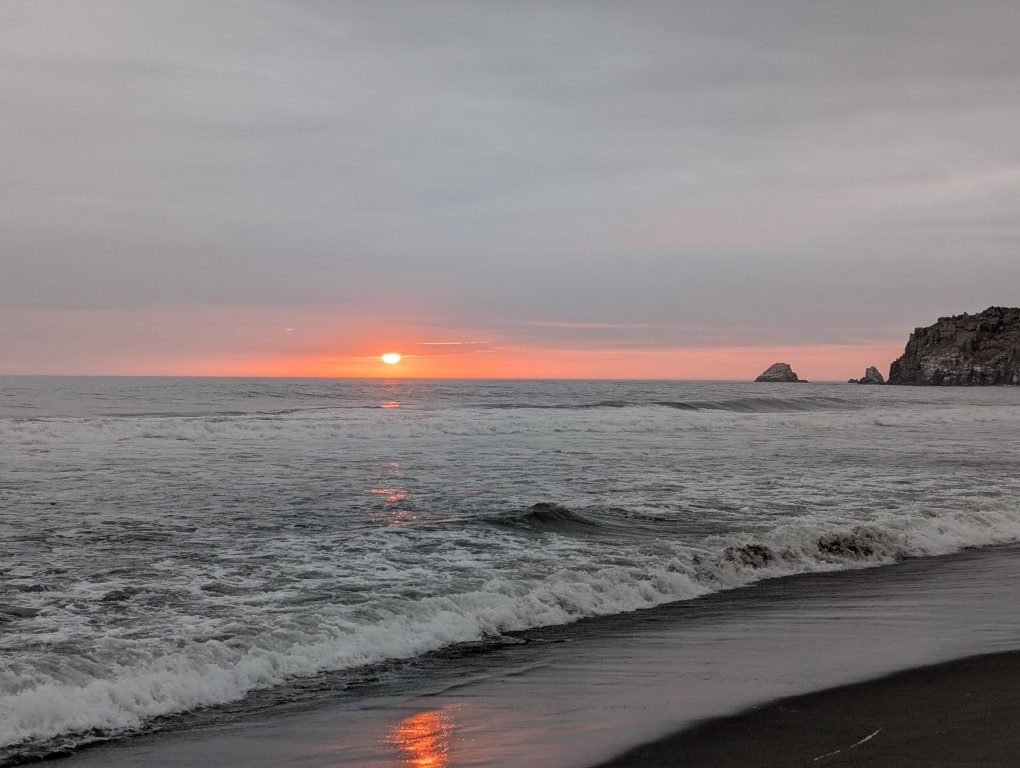
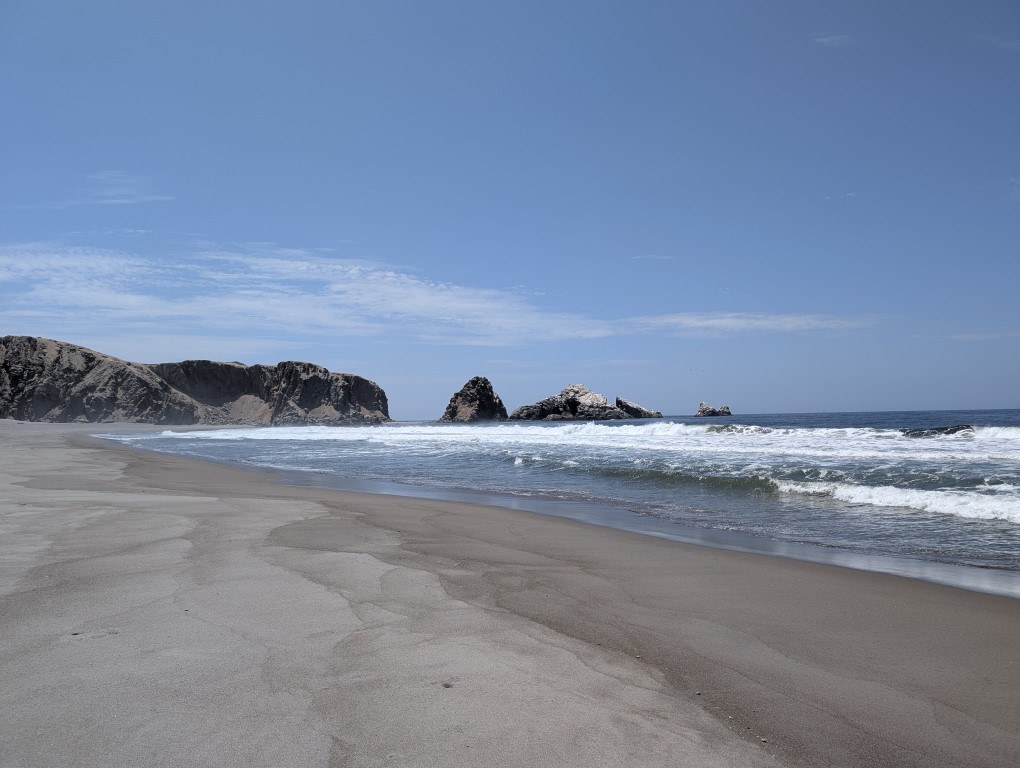
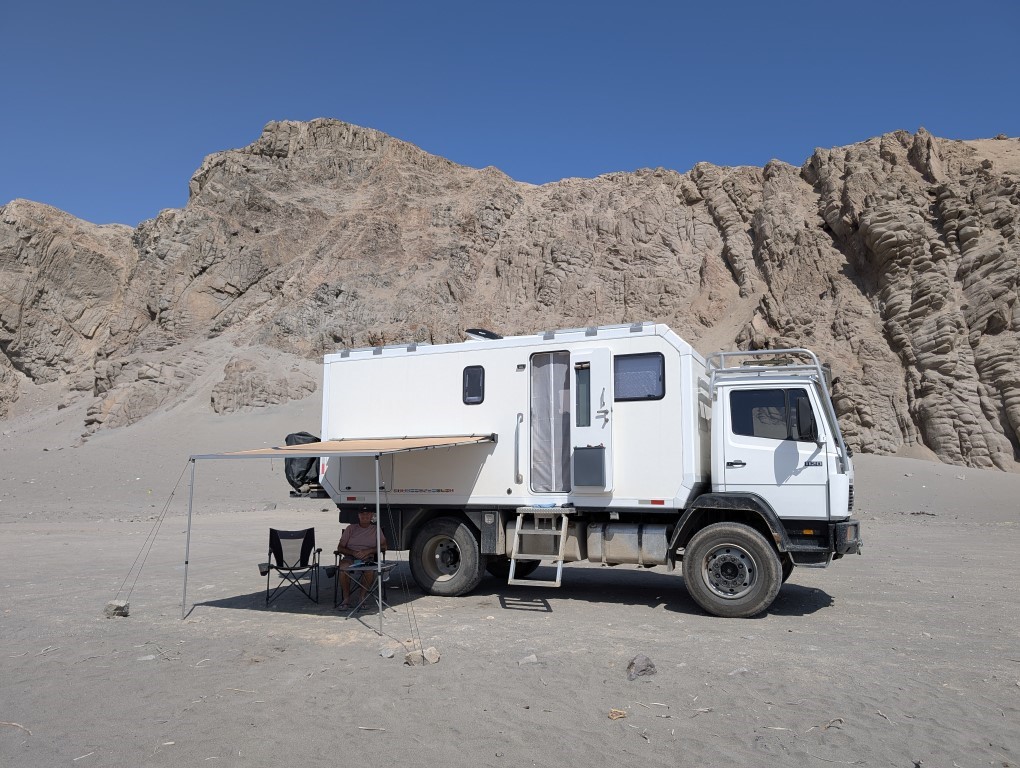
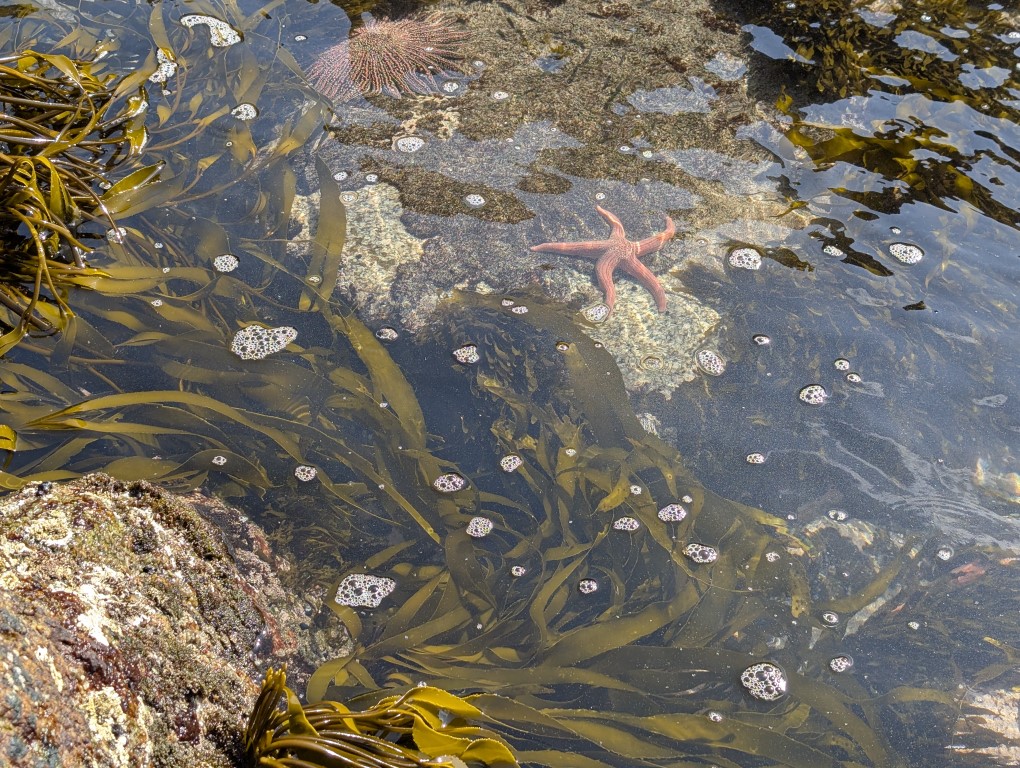
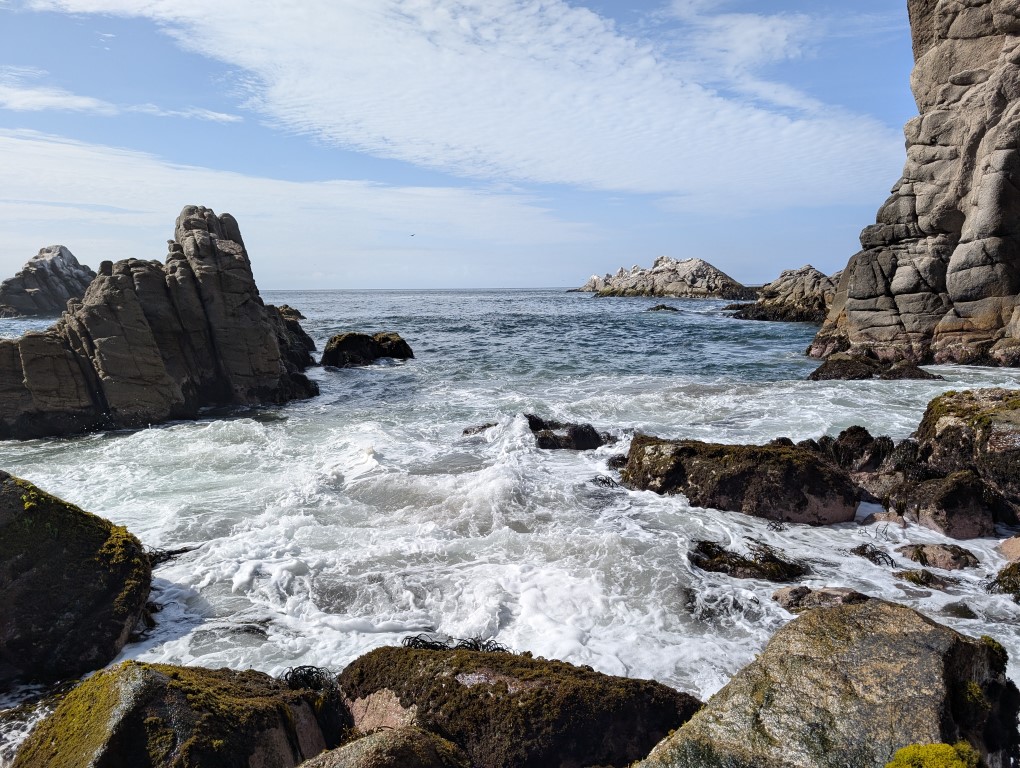
At the first beach, we enjoyed the sunset, a couple of beach walks and decided to spend another day in one spot doing what we used to do with Ivan- take out the awning, relax in our chairs, have some cake. have a bottle of champagne for happy hour, BBQ and really soak up the whole day. We couldn’t do it every day, but once in a while it feels luxurious.

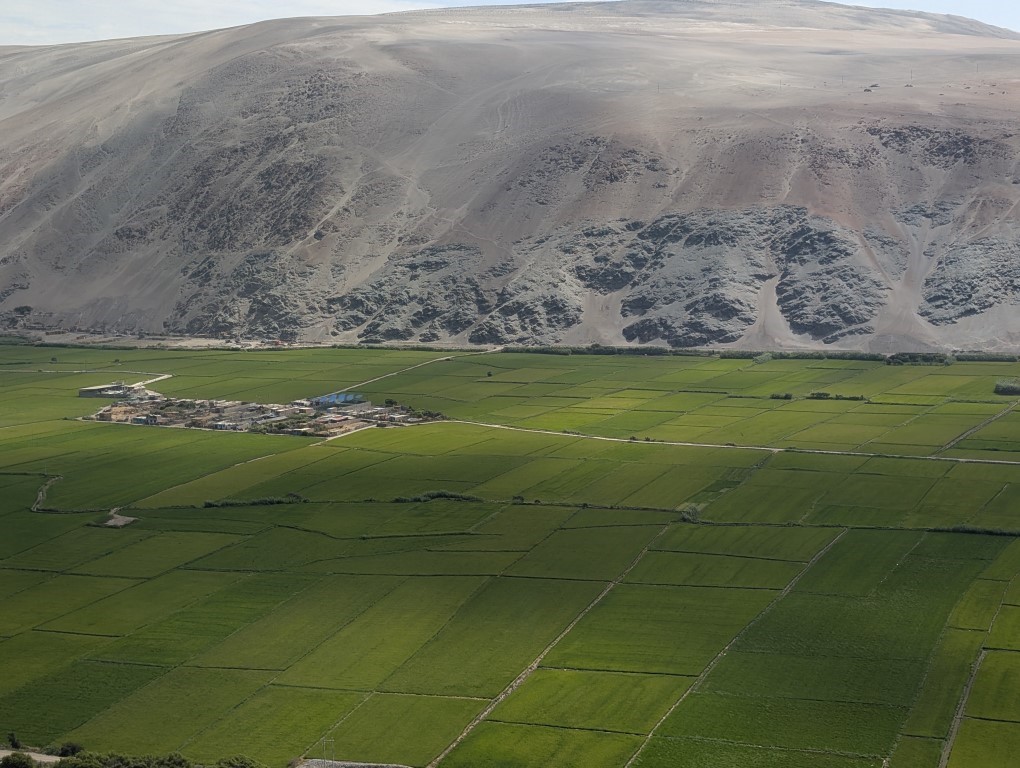
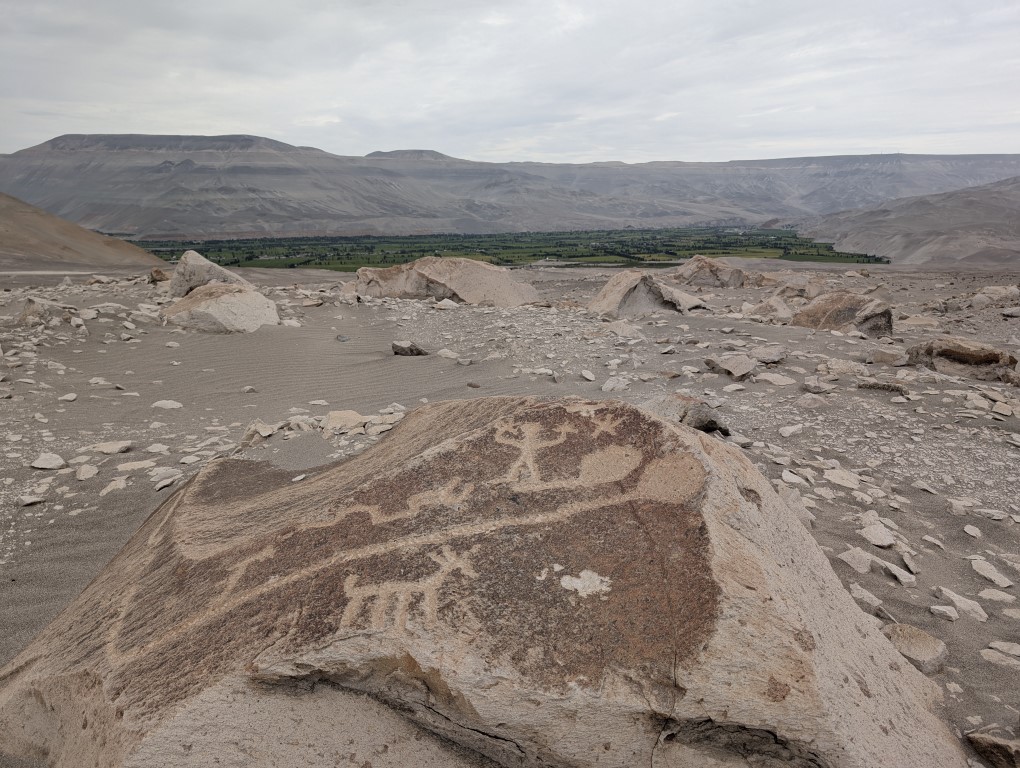
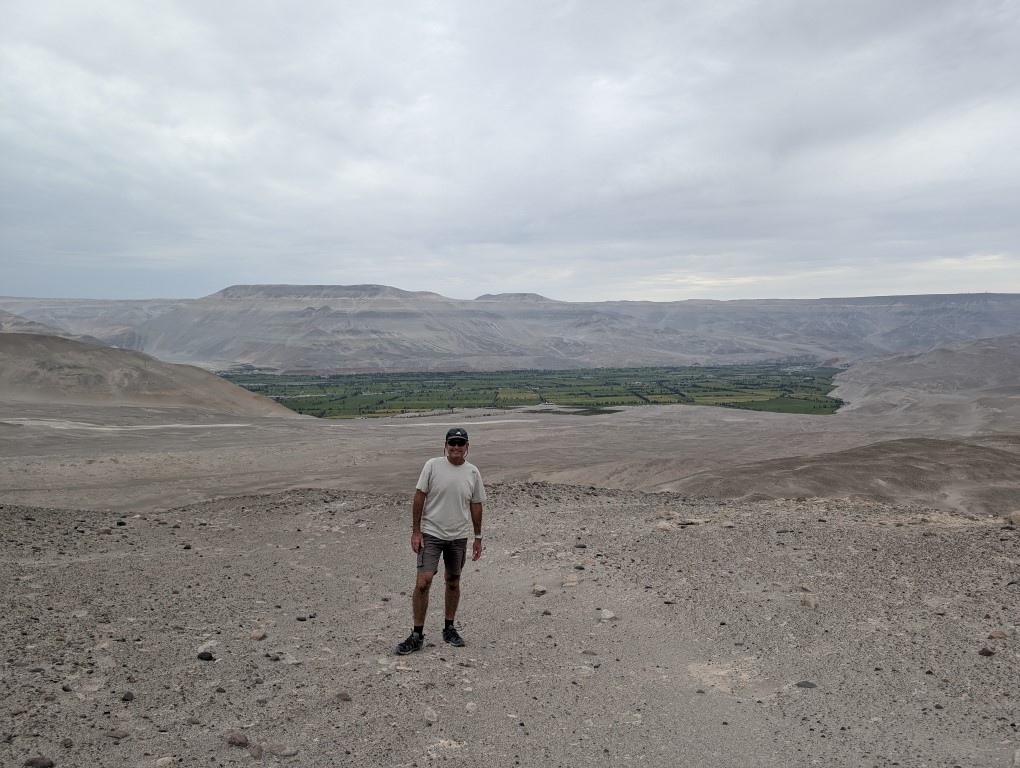
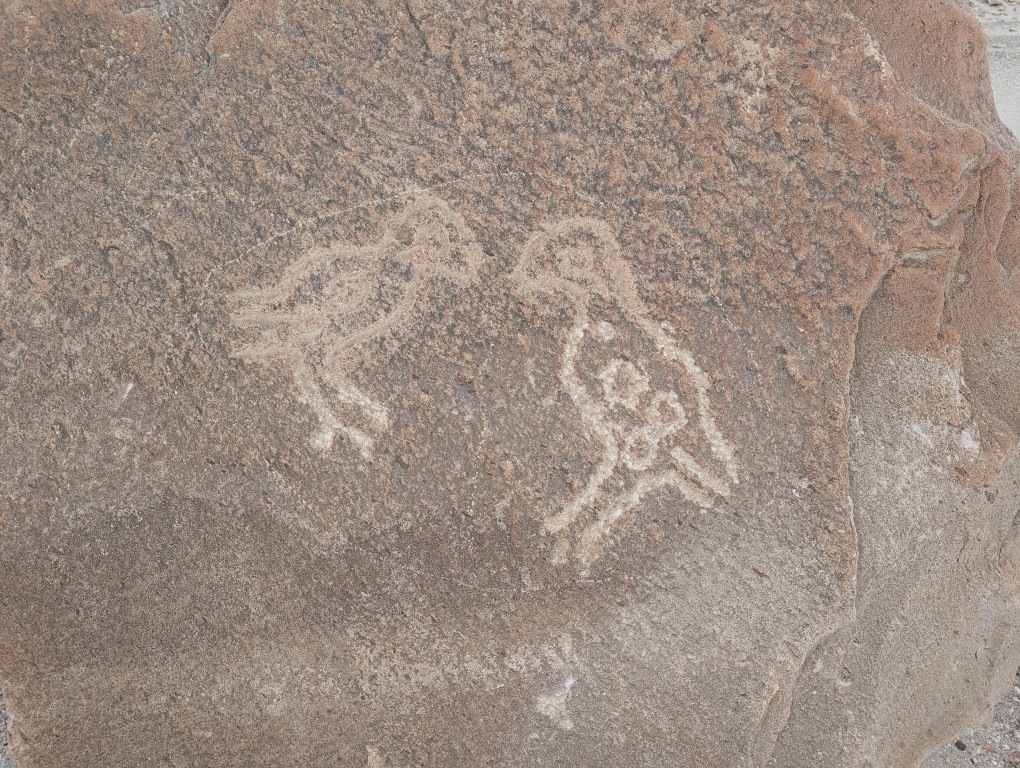
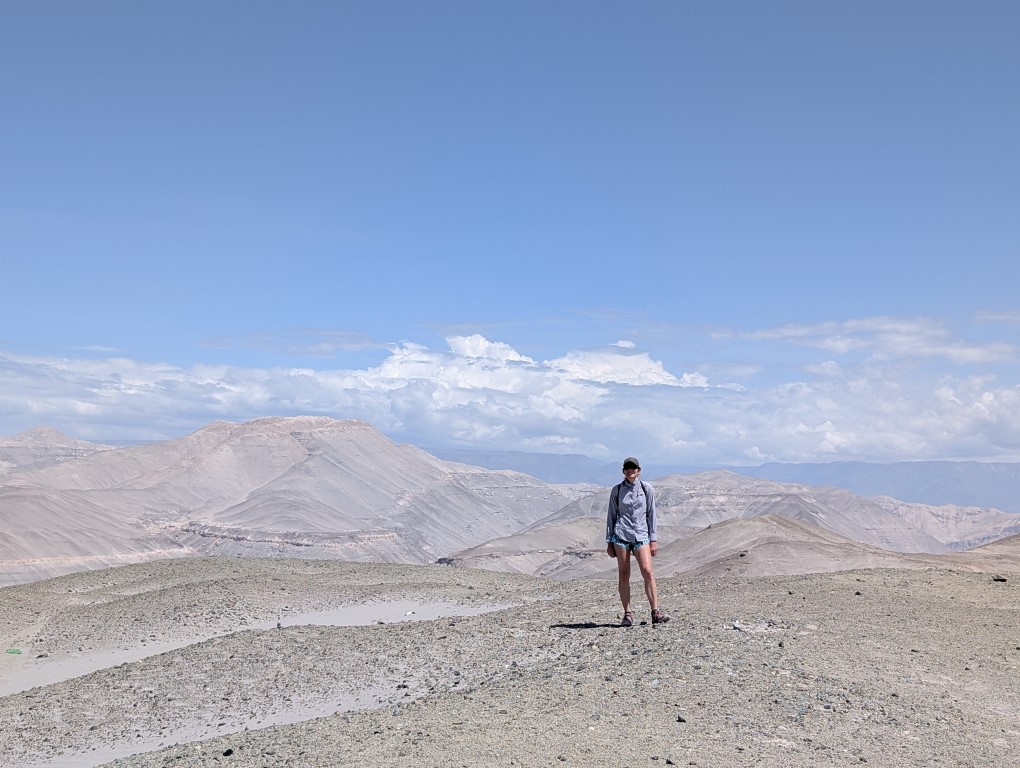
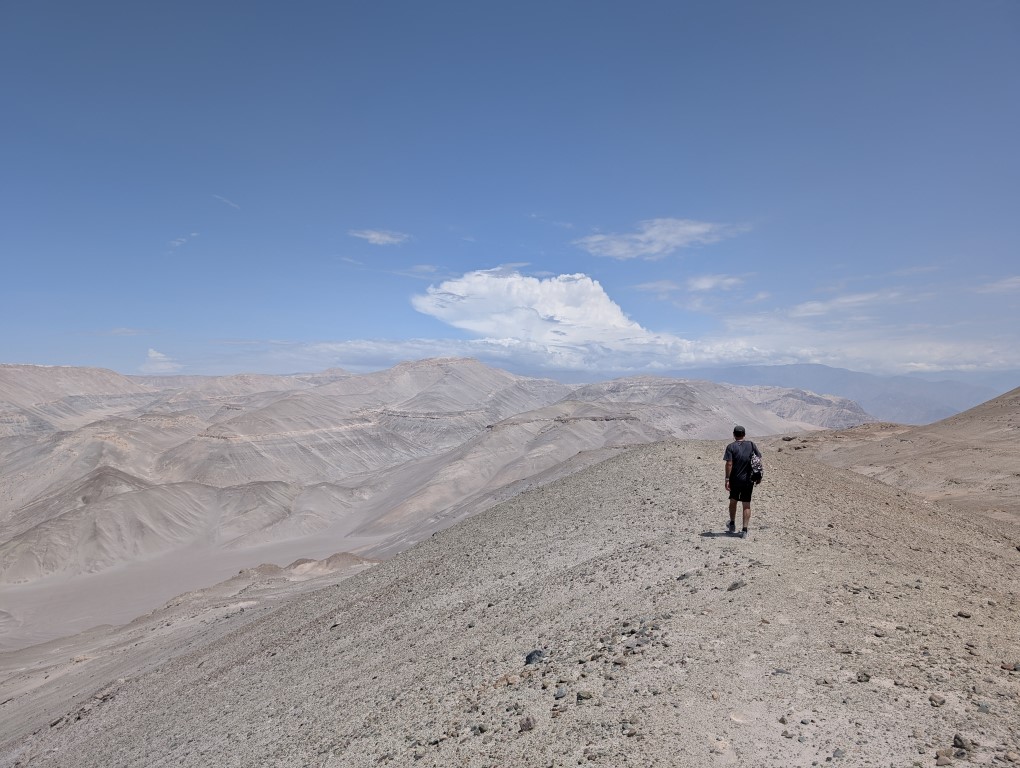
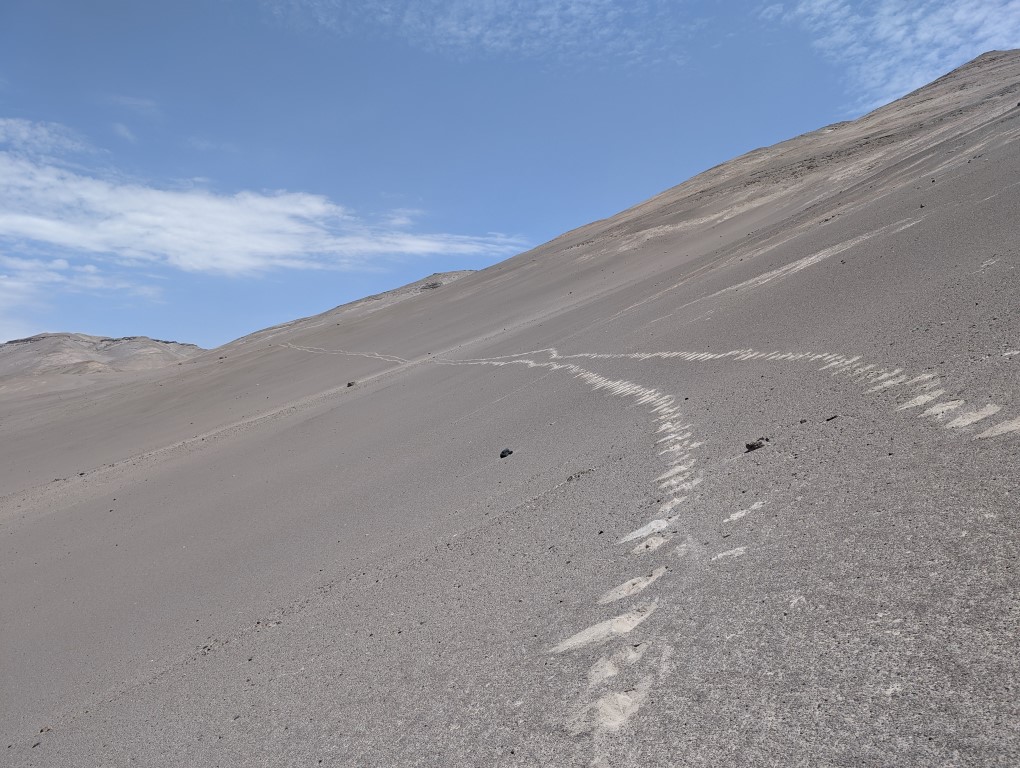
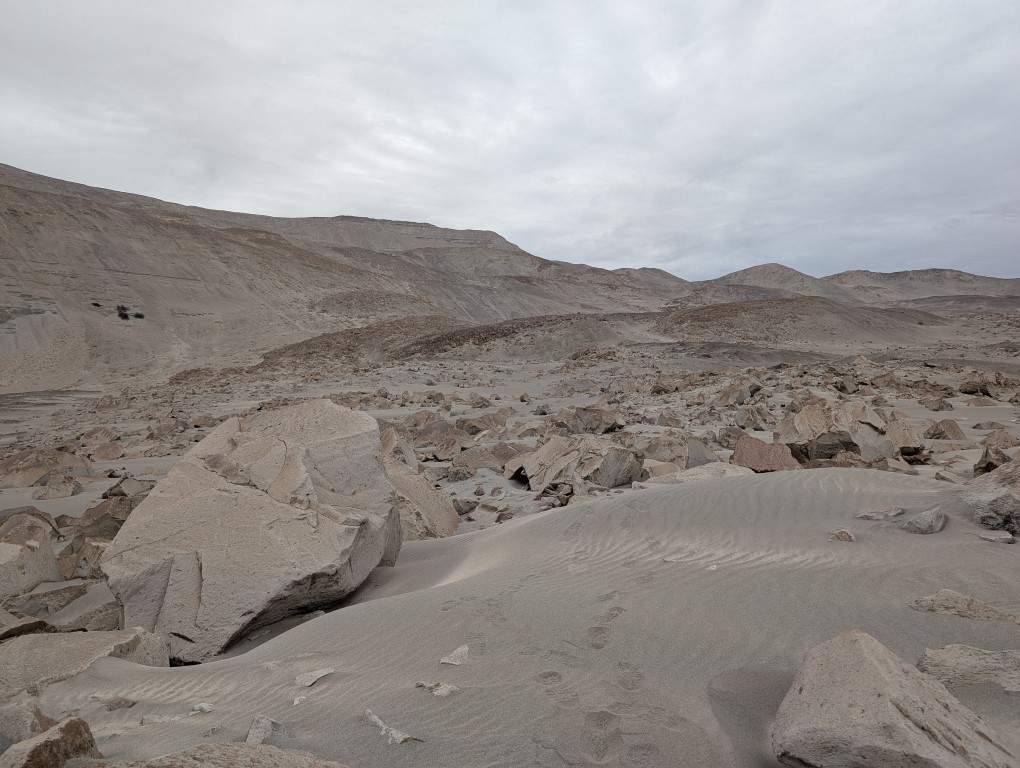
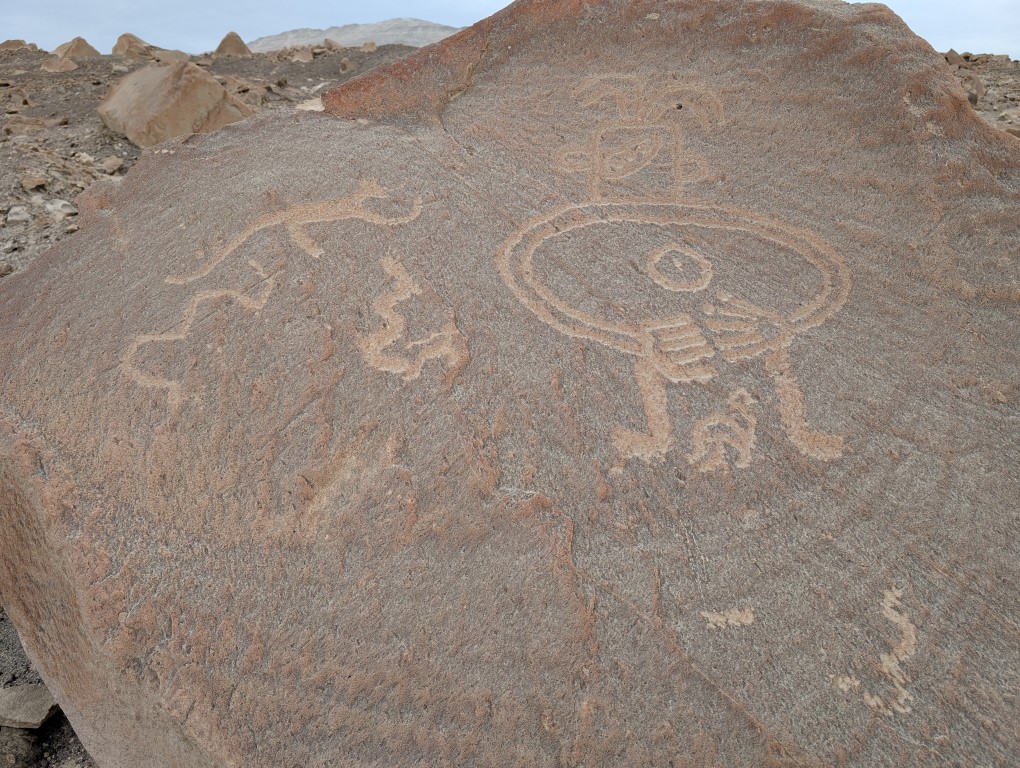
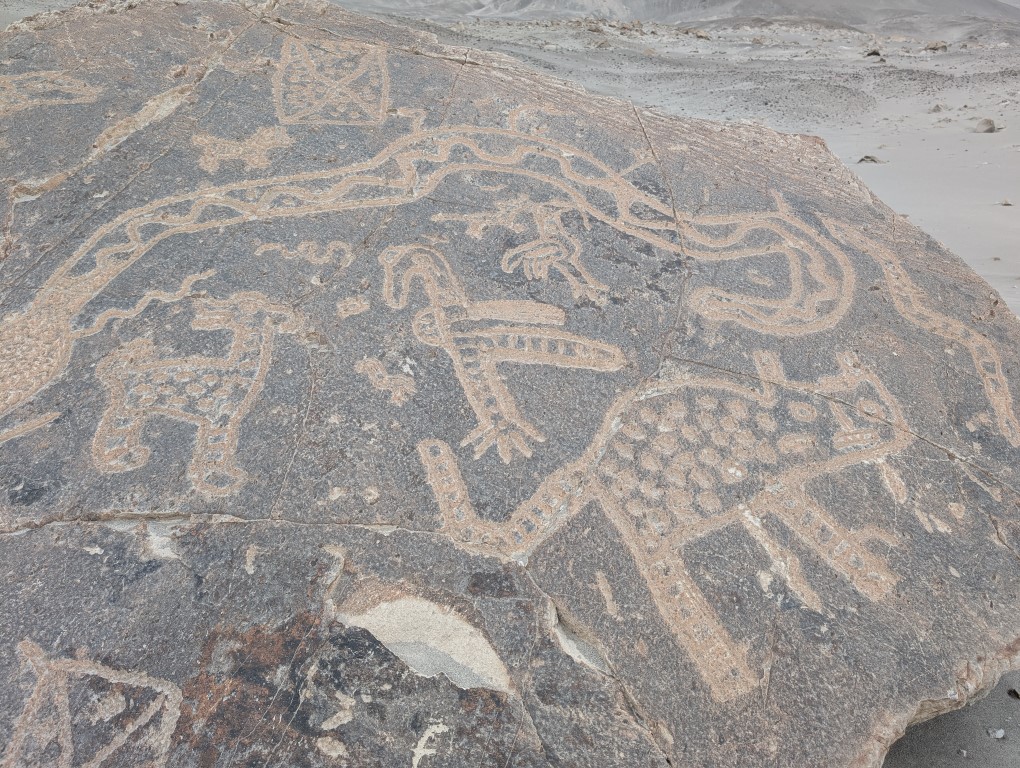
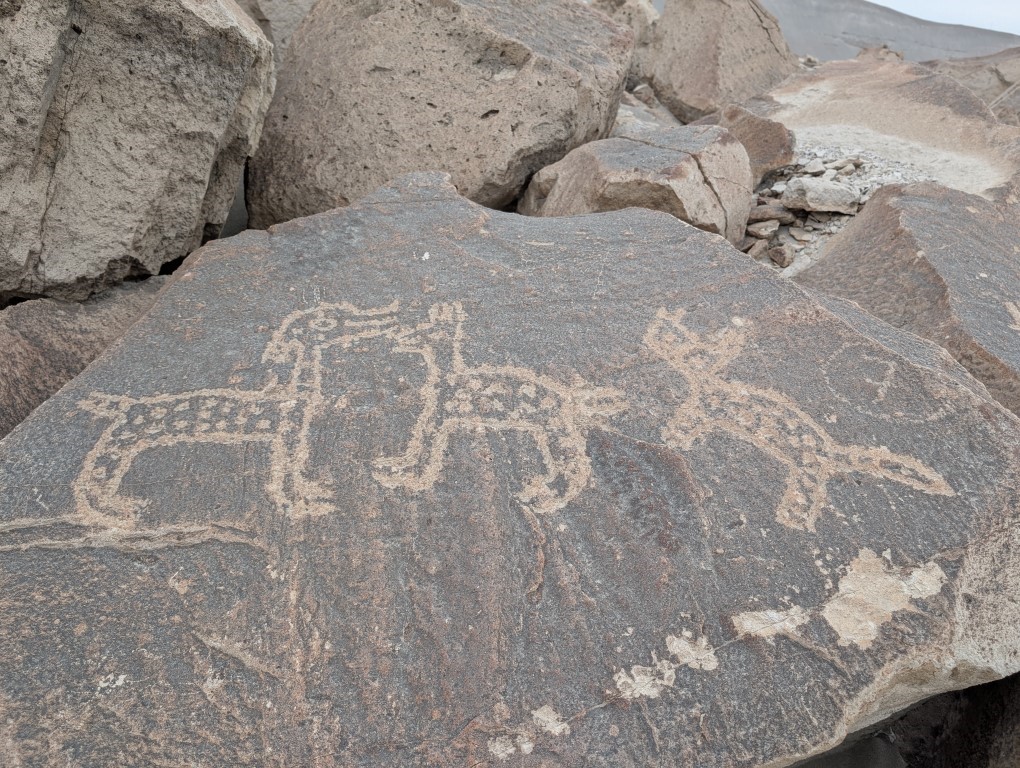
Like a yoyo, we moved back up into the hills to a place called Toro Muerto, a Peruvian rock art site. This place definitely warranted the word amazing because there are hundreds of extensive petroglyphs scattered on an entire hillside up above the little oasis town of Majes. We’ve never seen petroglyphs as good as this. And you can explore them on your own, by yourself because there are hardly any visitors there, just a friendly park ranger. When we asked him if we could also hike up into the desert mountains that surrounded the site, he reminded me of when we asked the marina manager in Greece when we arrived if we could hike up into the hills and he said go wherever you want! So we did. We made a large loop up to the highest peak we could see and then down the backside of it filling our shoes with sand and hoping we’d have enough water to make it before the sun got too strong. We did! It is SO nice to have AC in the truck to cool down after a long hike when we want to make some driving miles at the end of the day.
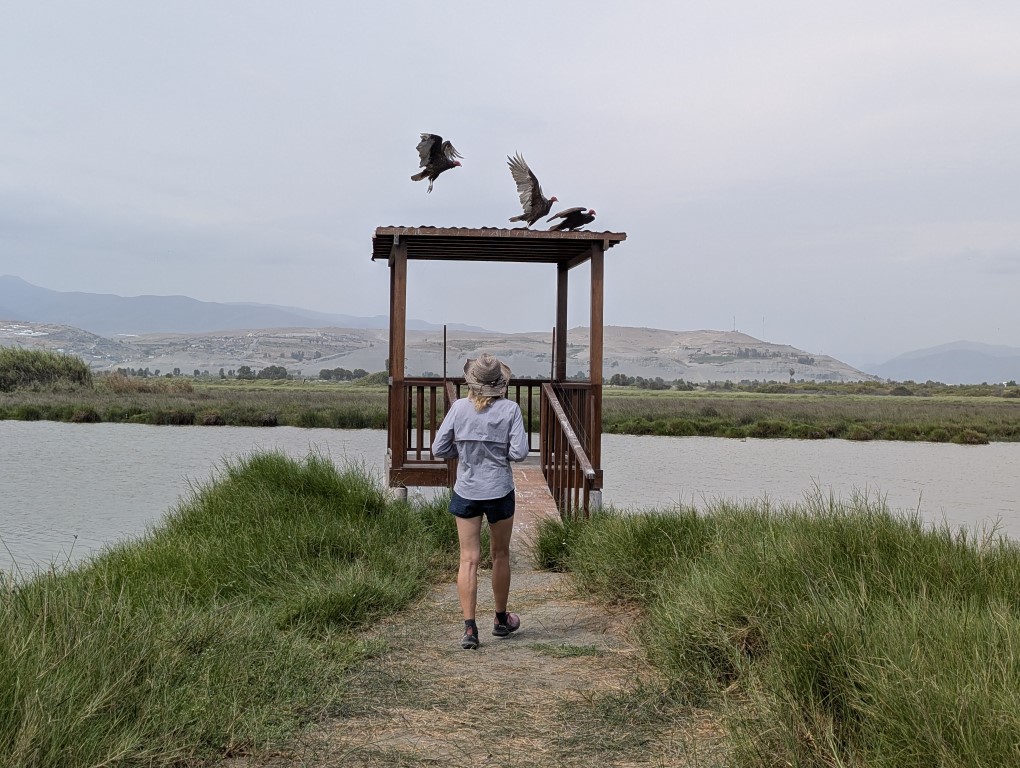
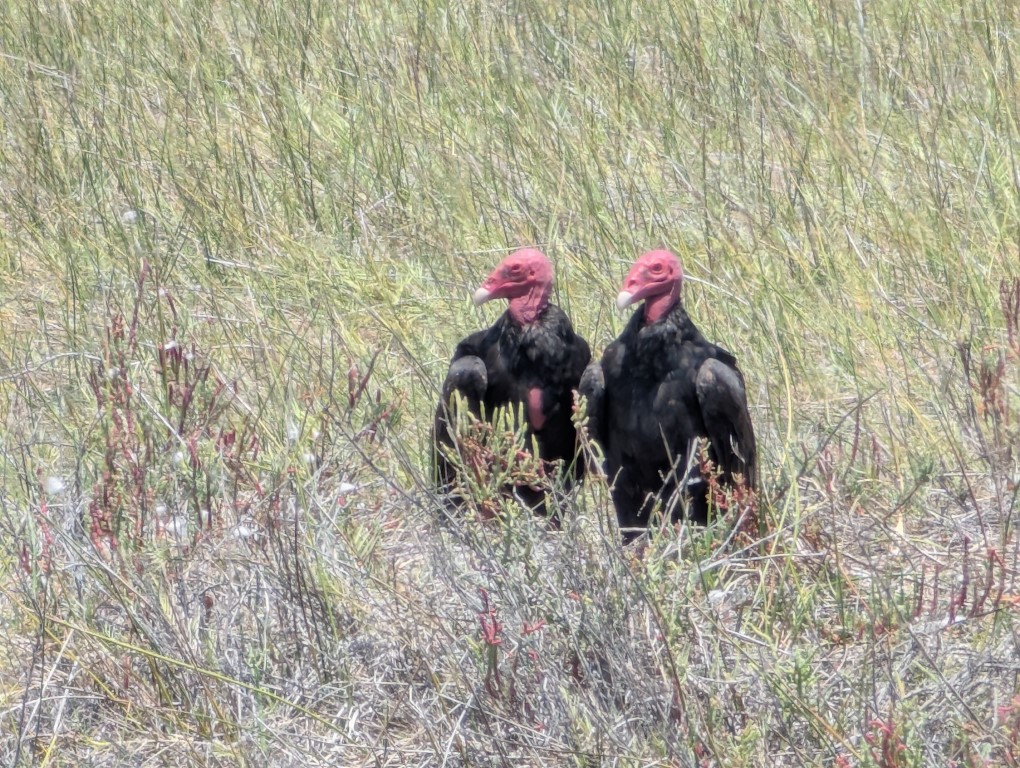
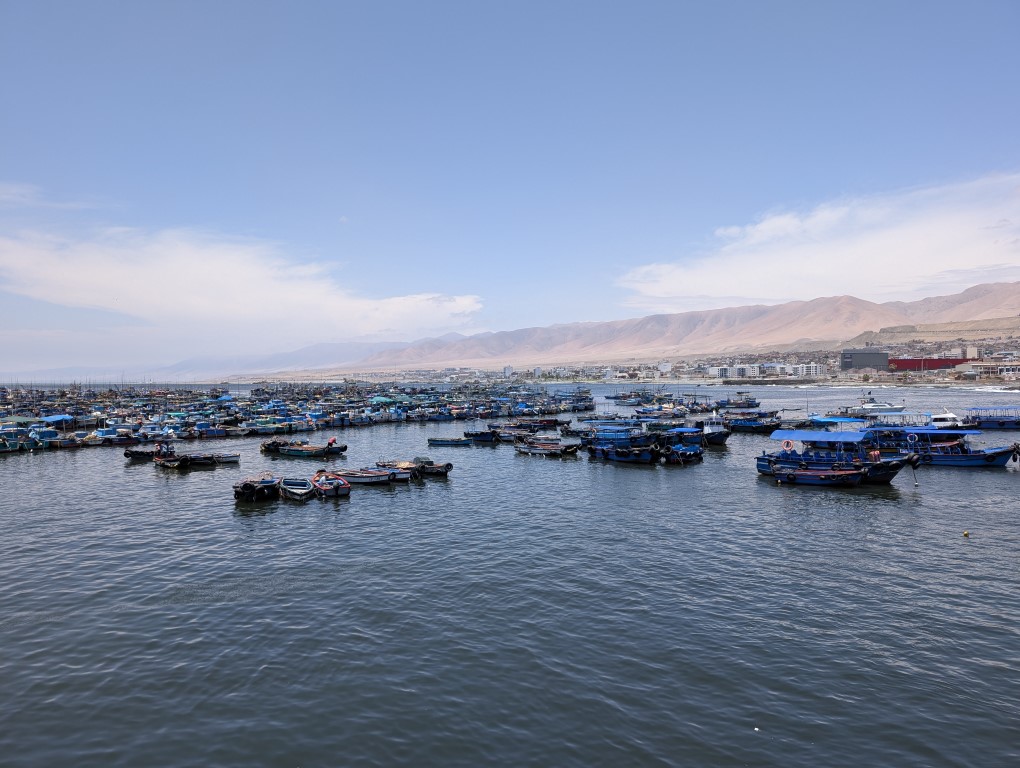
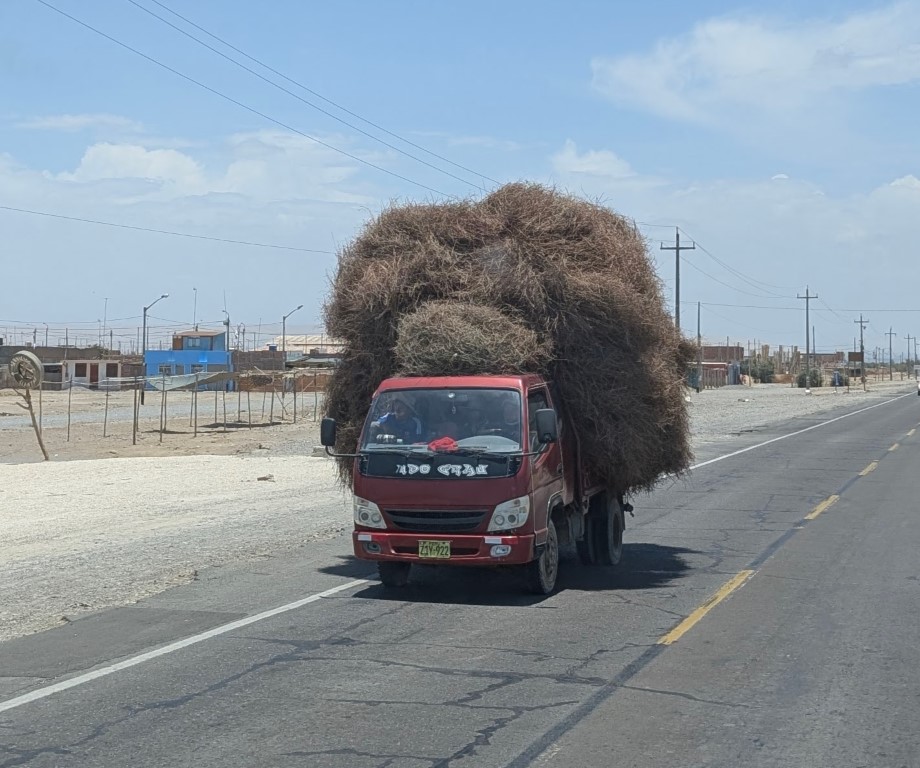
We bounced back to the coast and made some southing stopping at little towns and mostly lonely beaches. We visited a couple of bird preserves with a predominance of vultures and did some more beach walking which is not quite the same as S. Pacific beaches that’s for sure! I often look out and think about how we were once way offshore from here, crossing the entire Pacific. I would do it again if someone handed me a boat but neither of us have the energy to start over fitting out and maintaining a boat to do it. I wish the cobalt blue of the Pacific was visible from shore. But instead, it’s always a steel gray green that I don’t prefer. It was nice to look into the tide pools though and we’ve seen dolphins, sea lions and loads of birds. Plus you can’t really swim in it because its too rough. I read that further south in Chile there are beaches that you can. We shall see. We’re headed that way. As we plan to ship to a new continent this year, we are slowly making our way back to Argentina/Uruguay where the ports are.
